Nikola Tesla
Serbian American scientist Nikola Tesla invented the Tesla coil and alternating-current (AC) electricity, in addition to discovering the rotating magnetic field.
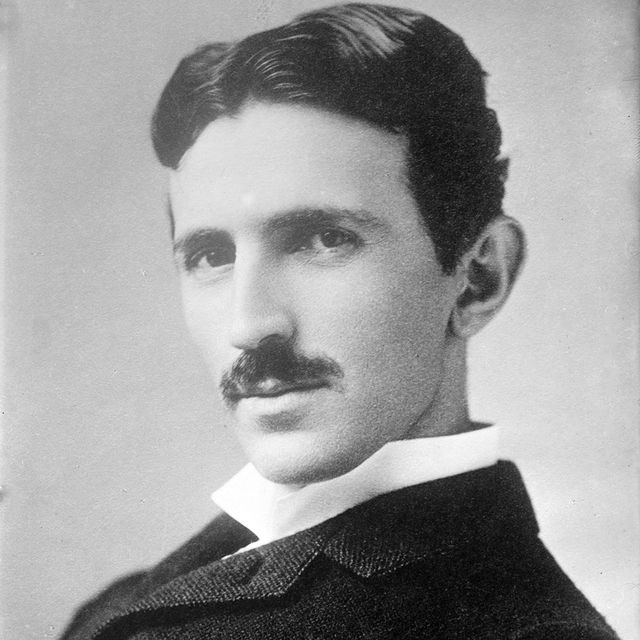

Quick Facts
When was nikola tesla born, nikola tesla and thomas edison, solo venture, how did nikola tesla die, legacy: movies, electric car, and wardenclyffe tower renovation, who was nikola tesla.
Engineer and inventor Nikola Tesla designed the alternating-current (AC) electric system, which is the predominant electrical system used across the world today. He also created the “Tesla coil” that is still used in radio technology. Born in modern-day Croatia, Tesla immigrated to the United States in 1884 and briefly worked with Thomas Edison before the two parted ways. The Serbian American sold several patent rights, including those to his AC machinery, to George Westinghouse . Tesla died at age 86 in January 1943, but his legacy lives on through his inventions and the electric car company Tesla that’s named in his honor.
FULL NAME: Nikola Tesla BORN: July 10, 1856 DIED: January 7, 1943 BIRTHPLACE: Smiljan, Croatia ASTROLOGICAL SIGN: Cancer
Tesla was born on July 10, 1856, in the Austrian Empire town of Smiljan that is now part of Croatia.
He was one of five children, including siblings Dane, Angelina, Milka, and Marica. Nikola’s interest in electrical invention was spurred by his mother, Djuka Mandic, who invented small household appliances in her spare time while her son was growing up.
Tesla’s father, Milutin Tesla, was a Serbian orthodox priest and a writer, and he pushed for his son to join the priesthood. But Nikola’s interests lay squarely in the sciences.
Tesla received quite a bit of education. He studied at the Realschule, Karlstadt (later renamed the Johann-Rudolph-Glauber Realschule Karlstadt) in Germany; the Polytechnic Institute in Graz, Austria; and the University of Prague during the 1870s.
After university, Tesla moved to Budapest, Hungary, where for a time he worked at the Central Telephone Exchange. It was while in Budapest that the idea for the induction motor first came to Tesla, but after several years of trying to gain interest in his invention, at age 28, Tesla decided to leave Europe for America.
In 1884, Tesla arrived in the United States with little more than the clothes on his back and a letter of introduction to famed inventor and business mogul Thomas Edison , whose DC-based electrical works were fast becoming the standard in the country. Edison hired Tesla, and the two men were soon working tirelessly alongside each other, making improvements to Edison’s inventions.
Several months later, the two parted ways due to a conflicting business-scientific relationship , attributed by historians to their incredibly different personalities. While Edison was a power figure who focused on marketing and financial success, Tesla was commercially out-of-touch and somewhat vulnerable. Their feud would continue to affect Tesla’s career.
In 1885, Tesla received funding for the Tesla Electric Light Company and was tasked by his investors to develop improved arc lighting. After successfully doing so, however, Tesla was forced out of the venture and, for a time, had to work as a manual laborer in order to survive. His luck changed two years later when he received funding for his new Tesla Electric Company.
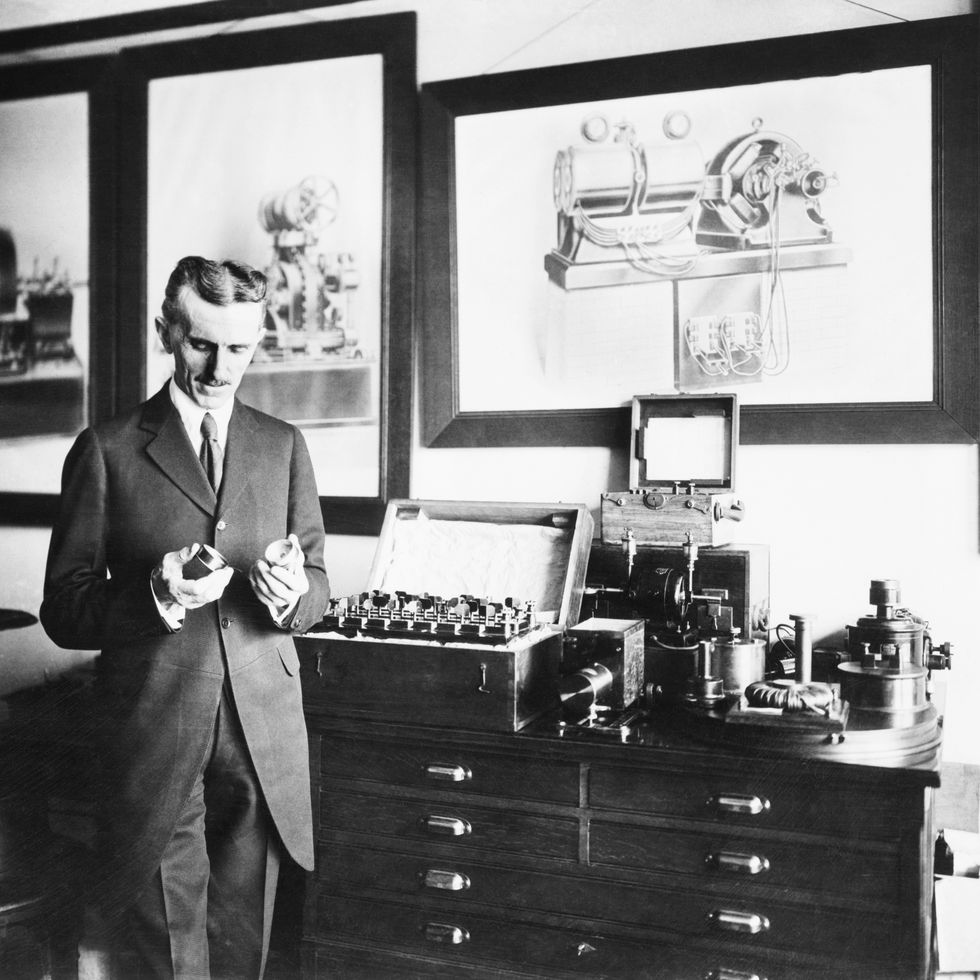
Throughout his career, Tesla discovered, designed, and developed ideas for a number of important inventions—most of which were officially patented by other inventors—including dynamos (electrical generators similar to batteries) and the induction motor.
He was also a pioneer in the discovery of radar technology, X-ray technology, remote control, and the rotating magnetic field—the basis of most AC machinery. Tesla is most well-known for his contributions in AC electricity and for the Tesla coil.
AC Electrical System
Tesla designed the alternating-current (AC) electrical system, which quickly became the preeminent power system of the 20 th century and has remained the worldwide standard ever since. In 1887, Tesla found funding for his new Tesla Electric Company, and by the end of the year, he had successfully filed several patents for AC-based inventions.
Tesla’s AC system soon caught the attention of American engineer and businessman George Westinghouse , who was seeking a solution to supplying the nation with long-distance power. Convinced that Tesla’s inventions would help him achieve this, in 1888, he purchased his patents for $60,000 in cash and stock in the Westinghouse Corporation.
As interest in an AC system grew, Tesla and Westinghouse were put in direct competition with Thomas Edison , who was intent on selling his direct-current (DC) system to the nation. A negative press campaign was soon waged by Edison, in an attempt to undermine interest in AC power.
Unfortunately for Edison, the Westinghouse Corporation was chosen to supply the lighting at the 1893 World’s Columbian Exposition in Chicago, and Tesla conducted demonstrations of his AC system there.
Hydroelectric Power Plant
In 1895, Tesla designed what was among the first AC hydroelectric power plants in the United States, at Niagara Falls. The following year, it was used to power the city of Buffalo, New York—a feat that was highly publicized throughout the world and helped further AC electricity’s path to becoming the world’s power system.

In the late 19 th century, Tesla patented the Tesla coil, which laid the foundation for wireless technologies and is still used in radio technology today. The heart of an electrical circuit, the Tesla coil is an inductor used in many early radio transmission antennas.
The coil works with a capacitor to resonate current and voltage from a power source across the circuit. Tesla used his coil to study fluorescence, x-rays, radio, wireless power, and electromagnetism in the earth and its atmosphere.
Wireless Power and Wardenclyffe Tower
Having become obsessed with the wireless transmission of energy, around 1900, Tesla set to work on his boldest project yet: to build a global, wireless communication system transmitted through a large electrical tower that would enable information sharing and provide free energy throughout the world.
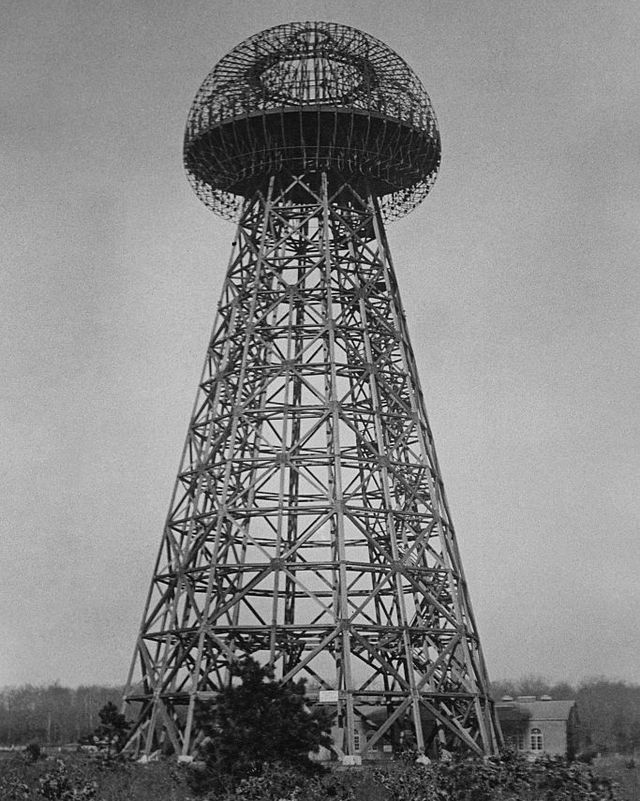
With funding from a group of investors that included financial giant J. P. Morgan , Tesla began work on the free energy project in earnest in 1901. He designed and built a lab with a power plant and a massive transmission tower on a site on Long Island, New York, that became known as Wardenclyffe.
However, doubts arose among his investors about the plausibility of Tesla’s system. As his rival, Guglielmo Marconi —with the financial support of Andrew Carnegie and Thomas Edison —continued to make great advances with his own radio technologies, Tesla had no choice but to abandon the project.
The Wardenclyffe staff was laid off in 1906, and by 1915, the site had fallen into foreclosure. Two years later, Tesla declared bankruptcy, and the tower was dismantled and sold for scrap to help pay the debts he had accrued.
After suffering a nervous breakdown following the closure of his wireless power project, Tesla eventually returned to work, primarily as a consultant. But as time went on, his ideas became progressively more outlandish and impractical. He grew increasingly eccentric, devoting much of his time to the care of wild pigeons in the parks of New York City . Tesla even drew the attention of the FBI with his talk of building a powerful “death ray,” which had received some interest from the Soviet Union during World War II.
Poor and reclusive, Tesla died of coronary thrombosis on January 7, 1943, at the age of 86 in New York City, where he had lived for nearly 60 years.
The legacy of Tesla’s work lives on to this day. In 1994, a street sign identifying “Nikola Tesla Corner” was installed near the site of his former New York City laboratory, at the intersection of 40 th Street and 6 th Avenue.
Several movies have highlighted Tesla’s life and famous works, most notably:
- The Secret of Nikola Tesla , a 1980 biographical film starring Orson Welles as J. P. Morgan .
- Nikola Tesla, The Genius Who Lit the World , a 1994 documentary produced by the Tesla Memorial Society and the Nikola Tesla Museum in Belgrade, Serbia.
- The Prestige , a 2006 fictional film about two magicians directed by Christopher Nolan , with rock star David Bowie portraying Tesla.
In 2003, a group of engineers founded Tesla Motors, a car company named after Tesla dedicated to building the first fully electric-powered car. Entrepreneur and engineer Elon Musk contributed over $30 million to Tesla in 2004 and serves as the company’s co-founder and CEO.
Tesla Motors unveiled its first electric car, the Roadster, in 2008. A high-performance sports vehicle, the Roadster helped changed the perception of what electric cars could be. In 2014, Tesla launched the Model S, a lower-priced model that, in 2017, set the MotorTrend world record for 0 to 60 miles per hour acceleration at 2.28 seconds. The company’s designs showed that an electric car could have the same performance as gasoline-powered sports car brands like Porsche and Lamborghini.
Tesla Science Center at Wardenclyffe
Since Tesla’s original forfeiture of his free energy project, ownership of the Wardenclyffe property has passed through numerous hands. Several attempts have been made to preserve it, but efforts to declare it a national historic site failed in 1967, 1976, and 1994.
Then, in 2008, a group called the Tesla Science Center (TSC) was formed with the intention of purchasing the property and turning it into a museum dedicated to the inventor’s work. In 2009, the Wardenclyffe site went on the market for nearly $1.6 million, and for the next several years, the TSC worked diligently to raise funds for its purchase. In 2012, public interest in the project peaked when Matthew Inman of TheOatmeal.com collaborated with the TSC in an Internet fundraising effort, ultimately receiving enough contributions to acquire the site in May 2013.
Wardenclyffe Tower finally joined the National Register of Historic Places in 2018. Work on its restoration is still in progress. A $20 million redevelopment broke ground in April 2023, but those efforts were complicated by large fire that November. The site is closed to the public “for the foreseeable future” for reasons of safety and preservation, according to the Tesla Science Center.
- Our virtues and our failings are inseparable, like force and matter. When they separate, man is no more.
- I do not think you can name many great inventions that have been made by married men.
- The scientists of today think deeply instead of clearly. One must be sane to think clearly, but one can think deeply and be quite insane.
Fact Check: We strive for accuracy and fairness. If you see something that doesn’t look right, contact us !
The Biography.com staff is a team of people-obsessed and news-hungry editors with decades of collective experience. We have worked as daily newspaper reporters, major national magazine editors, and as editors-in-chief of regional media publications. Among our ranks are book authors and award-winning journalists. Our staff also works with freelance writers, researchers, and other contributors to produce the smart, compelling profiles and articles you see on our site. To meet the team, visit our About Us page: https://www.biography.com/about/a43602329/about-us
Famous Inventors

Frederick Jones

Lonnie Johnson
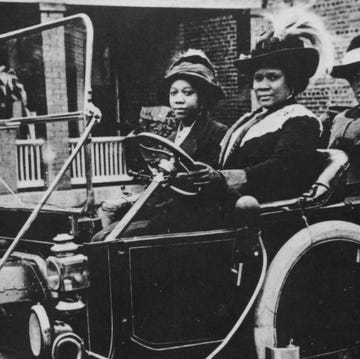
11 Famous Black Inventors Who Changed Your Life
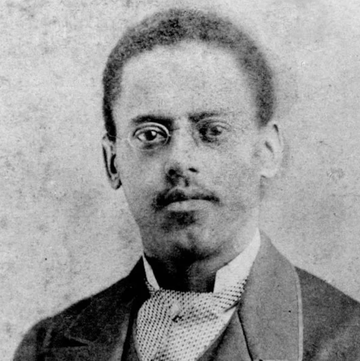
Lewis Howard Latimer

Nikola Tesla's Secrets to Longevity
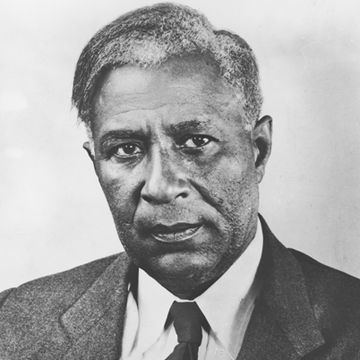
Garrett Morgan
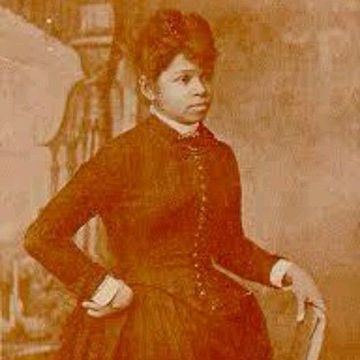
Sarah Boone
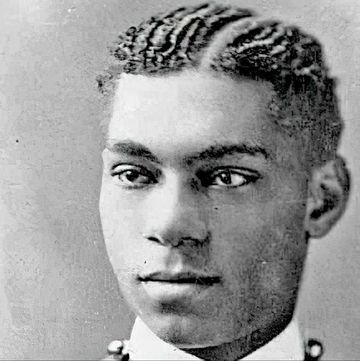
Henry Blair
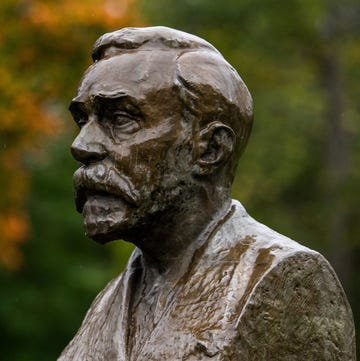
Alfred Nobel
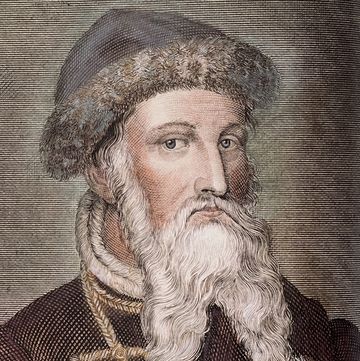
Johannes Gutenberg

The Best Books About Inventors
- History Classics
- Your Profile
- Find History on Facebook (Opens in a new window)
- Find History on Twitter (Opens in a new window)
- Find History on YouTube (Opens in a new window)
- Find History on Instagram (Opens in a new window)
- Find History on TikTok (Opens in a new window)
- This Day In History
- History Podcasts
- History Vault
Nikola Tesla
By: History.com Editors
Updated: March 13, 2020 | Original: November 9, 2009

Serbian-American engineer and physicist Nikola Tesla (1856-1943) made dozens of breakthroughs in the production, transmission and application of electric power. He invented the first alternating current (AC) motor and developed AC generation and transmission technology. Though he was famous and respected, he was never able to translate his copious inventions into long-term financial success—unlike his early employer and chief rival, Thomas Edison.
Nikola Tesla’s Early Years
Nikola Tesla was born in 1856 in Smiljan, Croatia, then part of the Austro-Hungarian Empire. His father was a priest in the Serbian Orthodox church and his mother managed the family’s farm. In 1863 Tesla’s brother Daniel was killed in a riding accident. The shock of the loss unsettled the 7-year-old Tesla, who reported seeing visions—the first signs of his lifelong mental illnesses.
Did you know? During the 1890s Mark Twain struck up a friendship with inventor Nikola Tesla. Twain often visited him in his lab, where in 1894 Tesla photographed the great American writer in one of the first pictures ever lit by phosphorescent light.
Tesla studied math and physics at the Technical University of Graz and philosophy at the University of Prague. In 1882, while on a walk, he came up with the idea for a brushless AC motor, making the first sketches of its rotating electromagnets in the sand of the path. Later that year he moved to Paris and got a job repairing direct current (DC) power plants with the Continental Edison Company. Two years later he immigrated to the United States.
Nikola Tesla and Thomas Edison
Tesla arrived in New York in 1884 and was hired as an engineer at Thomas Edison’s Manhattan headquarters. He worked there for a year, impressing Edison with his diligence and ingenuity. At one point Edison told Tesla he would pay $50,000 for an improved design for his DC dynamos. After months of experimentation, Tesla presented a solution and asked for the money. Edison demurred, saying, “Tesla, you don’t understand our American humor.” Tesla quit soon after.
Nikola Tesla and Westinghouse
After an unsuccessful attempt to start his own Tesla Electric Light Company and a stint digging ditches for $2 a day, Tesla found backers to support his research into alternating current. In 1887 and 1888 he was granted more than 30 patents for his inventions and invited to address the American Institute of Electrical Engineers on his work. His lecture caught the attention of George Westinghouse, the inventor who had launched the first AC power system near Boston and was Edison’s major competitor in the “Battle of the Currents.”
Westinghouse hired Tesla, licensed the patents for his AC motor and gave him his own lab. In 1890 Edison arranged for a convicted New York murderer to be put to death in an AC-powered electric chair—a stunt designed to show how dangerous the Westinghouse standard could be.
Buoyed by Westinghouse’s royalties, Tesla struck out on his own again. But Westinghouse was soon forced by his backers to renegotiate their contract, with Tesla relinquishing his royalty rights.
In the 1890s Tesla invented electric oscillators, meters, improved lights and the high-voltage transformer known as the Tesla coil. He also experimented with X-rays, gave short-range demonstrations of radio communication two years before Guglielmo Marconi and piloted a radio-controlled boat around a pool in Madison Square Garden. Together, Tesla and Westinghouse lit the 1893 World’s Columbian Exposition in Chicago and partnered with General Electric to install AC generators at Niagara Falls , creating the first modern power station.
Nikola Tesla’s Failures, Death and Legacy
In 1895 Tesla’s New York lab burned, destroying years’ worth of notes and equipment. Tesla relocated to Colorado Springs for two years, returning to New York in 1900. He secured backing from financier J.P. Morgan and began building a global communications network centered on a giant tower at Wardenclyffe, on Long Island. But funds ran out and Morgan balked at Tesla’s grandiose schemes.
Tesla lived his last decades in a New York hotel, working on new inventions even as his energy and mental health faded. His obsession with the number three and fastidious washing were dismissed as the eccentricities of genius. He spent his final years feeding—and, he claimed, communicating with—the city’s pigeons.
Tesla died in his room on January 7, 1943. Later that year the U.S. Supreme Court voided four of Marconi’s key patents, belatedly acknowledging Tesla’s innovations in radio. The AC system he championed and improved remains the global standard for power transmission.

HISTORY Vault: The Tesla Files
Declassified CIA documents reveal a secret history surrounding Nikola Tesla.

Sign up for Inside History
Get HISTORY’s most fascinating stories delivered to your inbox three times a week.
By submitting your information, you agree to receive emails from HISTORY and A+E Networks. You can opt out at any time. You must be 16 years or older and a resident of the United States.
More details : Privacy Notice | Terms of Use | Contact Us
Biography Online

Nikola Tesla Biography
Nikola Tesla (1856–1943) was one of the greatest and most enigmatic scientists who played a key role in the development of electromagnetism and other scientific discoveries of his time. Despite his breathtaking number of patents and discoveries, his achievements were often underplayed during his lifetime.
Short Biography Nikola Tesla
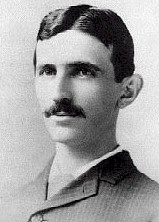
Tesla was a bright student and in 1875 went to the Austrian Polytechnic in Graz. However, he left to gain employment in Marburg in Slovenia. Evidence of his difficult temperament sometimes manifested and after an estrangement from his family, he suffered a nervous breakdown. He later enrolled in the Charles Ferdinand University in Prague, but again he left before completing his degree.
During his early life, he experienced many periods of illness and periods of startling inspiration. Accompanied by blinding flashes of light, he would often visualise mechanical and theoretical inventions spontaneously. He had a unique capacity to visualise images in his head. When working on projects, he would rarely write down plans or scale drawings, but rely on the images in his mind.
In 1880, he moved to Budapest where he worked for a telegraph company. During this time, he became acquainted with twin turbines and helped develop a device that provided amplification for when using the telephone.
In 1882, he moved to Paris, where he worked for the Continental Edison Company. Here he improved various devices used by the Edison company. He also conceived the induction motor and devices that used rotating magnetic fields.
With a strong letter of recommendation, Tesla went to the United States in 1884 to work for the Edison Machine Works company. Here he became one of the chief engineers and designers. Tesla was given a task to improve the electrical system of direct current generators. Tesla claimed he was offered $50,000 if he could significantly improve the motor generators. However, after completing his task, Tesla received no reward. This was one of several factors that led to a deep rivalry and bitterness between Tesla and Thomas Edison . It was to become a defining feature of Tesla’s life and impacted his financial situation and prestige. This deep rivalry was also seen as a reason why neither Tesla or Edison was awarded a Nobel prize for their electrical discoveries.
Disgusted that he did not ever receive a pay rise, Tesla resigned, and for a short while, found himself having to gain employment digging ditches for the Edison telephone company.
In 1886, Tesla formed his own company, but it wasn’t a success as his backers didn’t support his faith in AC current.
In 1887, Tesla worked on a form of X-Rays. He was able to photograph the bones in his hand; he also became aware of the side-effects of using radiation. However, his work in this area gained little coverage, and much of his research was later lost in a fire at a New York warehouse.
“The scientific man does not aim at an immediate result. He does not expect that his advanced ideas will be readily taken up… His duty is to lay the foundation for those who are to come, and point the way.”
– Nikola Tesla, Modern Mechanics and Inventions (July 1934)
In 1891, Tesla became an American citizen. This was also a period of great advances in electrical knowledge. Tesla demonstrated the potential for wireless energy transfer and the capacity for AC power generation. Tesla’s promotion of AC current placed him in opposition to Edison who sought to promote his Direct Current DC for electric power. Shortly before his death, Edison said his biggest mistake was spending so much time on DC current rather than the AC current Tesla had promoted.
In 1899, Tesla moved to Colorado Springs where he had the space to develop high voltage experiments. This included a variety of radio and electrical transmission experiments. He left after a year in Colorado Springs, and the buildings were later sold to pay off debts.
In 1900, Tesla began planning the Wardenclyffe Tower facility. This was an ambitious project costing $150,000, a fortune at the time.
In 1904, the US patent office reversed his earlier patent for the radio, giving it instead to G. Marconi . This infuriated Tesla who felt he was the rightful inventor. He began a long, expensive and ultimately unsuccessful attempt to fight the decision. Marconi went on to win the Nobel Prize for physics in 1909. This seemed to be a repeating theme in Tesla’s life: a great invention that he failed to personally profit from.
Nikola Tesla also displayed fluorescent lamps and single node bulbs.
Tesla was in many ways an eccentric and genius. His discoveries and inventions were unprecedented. Yet, he was often ostracised for his erratic behaviour (during his later years, he developed a form of obsessive-compulsive behaviour). He was not frightened of suggesting unorthodox ideas such as radio waves from extraterrestrial beings. His ideas, lack of personal finance and unorthodox behaviour put him outside the scientific establishment and because of this, his ideas were sometimes slow to be accepted or used.
“All that was great in the past was ridiculed, condemned, combated, suppressed — only to emerge all the more powerfully, all the more triumphantly from the struggle.”
– Nikola Tesla, A Means for Furthering Peace (1905)
Outside of science, he had many artistic and literary friends; in later life he became friendly with Mark Twain , inviting him to his laboratory. He also took an interest in poetry, literature and modern Vedic thought, in particular being interested in the teachings and vision of the modern Hindu monk, Swami Vivekananda . Tesla was brought up an Orthodox Christian, although he later didn’t consider himself a believer in the true sense. He retained an admiration for Christianity and Buddhism.
“For ages this idea has been proclaimed in the consummately wise teachings of religion, probably not alone as a means of insuring peace and harmony among men, but as a deeply founded truth. The Buddhist expresses it in one way, the Christian in another, but both say the same: We are all one.”
– Nikola Tesla, The Problem of Increasing Human Energy (1900)
As well as considering scientific issues, Tesla was thoughtful about greater problems of war and conflict, and he wrote a book on the subject called A Means for Furthering Peace (1905). This expressed his views on how conflict may be avoided and humanity learn to live in harmony.
“What we now want most is closer contact and better understanding between individuals and communities all over the earth and the elimination of that fanatic devotion to exalted ideals of national egoism and pride, which is always prone to plunge the world into primeval barbarism and strife.”
– Nikola Tesla, My Inventions (1919)
Personal life
Tesla was famous for working hard and throwing himself into his work. He ate alone and rarely slept, sleeping as little as two hours a day. He remained unmarried and claimed that his chastity was helpful to his scientific abilities. In later years, he became a vegetarian, living on only milk, bread, honey, and vegetable juices.
Tesla passed away on 7 January 1943, in a New York hotel room. He was 86 years old.
After his death, in 1960 the General Conference on Weights and Measures named the SI unit of magnetic field strength the Tesla in his honour.
Citation: Pettinger, Tejvan . “ Biography of Nikola Tesla” , Oxford, UK – www.biographyonline.net . Last updated 25th September 2017
Tesla: Inventor of the Electrical Age

Tesla: Inventor of the Electrical Age at Amazon
Tesla: The Man who invented the Twentieth Century

Key Inventions of Nikola Tesla
- Development in electromagnetism
- Theoretical work on Alternating Current (AC)
- Tesla Coil – magnifying transmitter
- Polyphase system of electrical distribution
- Patent for an early form of radio
- Wireless electrical transfer
- Devices for lightning protection
- Concepts for electrical vehicles
Important contributions in
- Early models of radar
- Remote control
- Nuclear physics
Related pages

Inventions that changed the world – Famous inventions that made a great difference to the progress of the world, including aluminium, the telephone and the printing press.

External pages
- Tesla Museum
Nikola Tesla – The Genius Who Lit the World and Saw the Future
- by history tools
- November 19, 2023
Nikola Tesla was one of the most forward-thinking inventors and engineers in history whose pioneering work with electricity literally lit up the modern world. Though underappreciated in his own time, Tesla created hundreds of groundbreaking innovations that fundamentally advanced technology and changed the course of history. This complete biography explores Tesla’s storied life, brilliant vision, and lasting impact.
Introduction to the Master of Electricity
Nikola Tesla was born in 1856 in Smiljan, Croatia and displayed astonishing mental abilities and imagination from an early age. His lifelong passion for energy and electricity was evident even as a child when he created his own tiny waterwheels and turbines. Tesla went on to study math, physics, and mechanics in his teen years at advanced schools in Austria and Germany, showing great promise. After graduating, he worked with Thomas Edison on DC power projects for a period but soon struck out on his own to champion AC electricity instead.
Tesla constructed his first AC motors in the late 1880s and partnered with George Westinghouse to commercialize AC power. This set the stage for an epic technology battle against Edison called the “War of the Currents” which Tesla and Westinghouse ultimately won, ensuring AC became the global standard. Throughout his life, Tesla discovered groundbreaking electrical innovations that form the basis of modern power and communication systems. Though he died in obscurity, Tesla‘s inventionsUNDOUBTEDLY constituted some of the most important technological advances in history.
Early Life and Education – The Making of a Genius
Childhood of creativity and tragedy.
Nikola Tesla was born on July 10th, 1856 in Smiljan, Croatia. His father, Milutin Tesla, was a priest in the Serbian Orthodox church and his mother Djuka Mandic was a homemaker and amateur inventor who created household appliances to help with daily tasks. Tesla inherited much of his inventive spirit from his mother. Tesla was one of five children, though his older brother died tragically in an accident when Nikola was five years old. The loss deeply impacted him and shaped his obsessive and eccentric personality later in life.
As a child, Tesla displayed astonishing creativity and visualization abilities. He could supposedly perform complex mathematical equations entirely in his mind without writing them down. Young Tesla was also captivated by thunderstorms and lightning. He made sketches of inventions like turbines and engines, even constructing a tiny waterwheel as a boy by observing the local river. His interests foreshadowed his future passion for electricity and engineering.
Immersive Education Shapes a Visionary Mind
In 1870, Tesla attended the Austrian Polytechnic School in Graz on an academic scholarship where he studied physics, mechanics, and mathematics. There, Tesla became fascinated with the Gramme dynamo which generated direct current electricity while also exploring fields like electrical engineering before they were widely taught. In his second year, Tesla stopped attending lectures and studied independently instead, astonishing professors with his brilliance but also worrying them with his unusual study habits and solitary nature.
After leaving Graz without a degree in 1878, Tesla contracted cholera and seemingly had intense visions during his recovery where he claimed to have unlocked the secrets of alternating current in a moment of insight. The following year, he attended the Charles-Ferdinand University in Prague deepening his education even further and receiving a degree in physics in 1882. Tesla’s academic efforts clearly shaped his boundary-pushing innovations down the line.
Early Career – Harnessing the Magic of Electricity
Fresh out of school in 1882, Tesla began working for the Continental Edison Company in Paris. He focused on improving direct current generators and motors. At the time, Edison’s DC system was the only existing power system. After two years, Tesla departed for America to meet Edison himself and share his ideas.
Working With his Hero-turned-Rival, Edison
In 1884, Tesla arrived in New York and was hired to work directly for Thomas Edison. The two inventors got along well initially, and Edison was impressed by Tesla‘s skill. But things began deteriorating as Tesla pushed for more pay and Edison denied him. Edison reportedly offered $50,000 if Tesla could improve his inefficient direct current dynamos. Tesla succeeded but Edison dismissed the offer as a joke, causing bad blood between them.
Tesla left Edison‘s company after just one year of service. But this marked the start of Tesla’s pioneering research into alternating current electricity which would become his claim to fame. The messy split also sparked an intense rivalry with Edison that would culminate in the War of the Currents.
Discovering Alternating Current
In 1885, Tesla secured funding for his own startup focused on arc lighting systems and began developing his own AC motors and transformers. While working with high frequency alternators, he rediscovered the rotating magnetic field principle that essentially forms the basis of AC machinery today.
Tesla acquired several patents for AC motors, generators, and transformers in 1887-1888. His innovations relied on polyphase alternating currents rather than direct currents to distribute power more efficiently over long distances. Tesla gave acclaimed lectures to engineers describing the advantages of AC over DC. His ideas quickly caught the attention of American entrepreneur George Westinghouse.
Winning the War of the Currents – AC vs DC
George Westinghouse recognized the merits of Tesla’s AC approach and purchased his polyphase system patents in 1888 which included AC motors and transformers. This decision set the stage for a battle over the future of electricity between Westinghouse backing AC and Thomas Edison promoting DC. The stakes were enormous given the two incompatible electrical standards.
Edison wielded his broad patents and influence to block adoption of AC as much as possible, even staging public stunts to portray AC as dangerous. But thanks to Tesla’s innovations, Westinghouse prevailed when AC was chosen to power the Chicago World Fair of 1893 illuminating over 200,000 lightbulbs. Niagara Falls also chose AC to generate their groundbreaking hydroelectric plant in 1895. AC proved capable of transmitting power over vastly greater distances than DC which required power stations every mile.
This victory by Westinghouse demonstrated the superiority of AC power which was quickly adopted as the standard. To this day, our homes and cities are powered by Tesla‘s polyphase AC system showing its profound impact. Tesla‘s innovations literally electrified the modern world.
Trailblazing Inventions – Fueling the Future
In addition to revolutionizing electric power, Tesla discovered countless groundbreaking inventions over his lifetime that changed the future of technology and paved the way for modern wireless communication.
Radio and Wireless Communication
Tesla is credited by many to have been the first person to transmit and receive radio signals when he demonstrated a radio-controlled boat in 1898. While Guglielmo Marconi won the Nobel Prize for radio in 1909, Tesla had developed the underlying principles two years earlier. Tesla predicted the coming age of wireless communication, stating:
“As I review the events of my past life I realize how subtle are the influences that shape our destinies…we can never fathom the marvellous complexity of the causes behind the daily incidents that pass before our eyes and their altered relationships.” (Tesla 1926)
Tesla also patented various fundamental radio circuits between 1896-1900 that formed the basis for modern radio engineering. Though Marconi is often viewed as the inventor of radio, clearly Tesla‘s groundwork was pivotal.
Remote Control
In 1898 at Madison Square Garden, Tesla demonstrated a boat controlled wirelessly using radio-like technology to the amazement of crowds. This was one of the earliest implementations of remote control technology. Tesla described the system as being wireless like “invisible waves” and foresaw remote control being used in all kinds of mechanical devices and vehicles in the future.
Working with high voltage electricity and vacuum tubes, Tesla created some of the first X-ray images in 1895. They were produced earlier than Wilhelm Röntgen’s discovery of X-rays which garnered him the first Nobel Prize in Physics. Though Tesla did not win that prize, his innovations contributed to the field.
Electric Motors
Tesla invented the first AC induction motor in 1883 exploiting rotating magnetic fields generated by alternating current. Induction motors are brushless motors that provide high efficiency and operational speeds. They are the most common type of AC motors in use today powering appliances, tools, conveyors, and more.
Neon Lights
While investigating gases, Tesla created fluorescent light bulbs that lit up when electricity passed through them. This discovery led to the development of neon signs and lighting. Tesla‘s innovations literally brightened up the world.
Laser Vision
Tesla proposed using high voltage electricity and tiny metal particles to produce beams of concentrated light. Essentially, he had envisioned laser technology before the first working laser was invented in 1960. This showed Tesla’s thinking was decades ahead of his time.
A Futurist Stalled by Business Failures
In addition to his AC system and visionary inventions, Tesla conceived of even more ambitious plans that were simply impossible with the technology of his era. He envisioned worldwide wireless transmission of electricity essentially turning the earth into a giant conductor. In 1901, he began constructing his Wardenclyffe Tower facility on Long Island to demonstrate wireless power transmission on a large scale and provide telecommunications. But unable to secure adequate funding from industrialists like J.P Morgan, Tesla had to abandon the unfinished project in 1905.
Tesla articulated many forward-thinking concepts like wireless networks, self-driving vehicles, smart homes, and AI. But his poor business skills and inability to gain investors meant many of these revolutionary technologies could only be realized later by others. While a brilliant scientist, Tesla lacked the entrepreneurial abilities of businessmen like Edison or Westinghouse to commercialize his ideas. Tesla lived the final decade of his life in poverty relying on the kindness of friends until passing in 1943.
Legacy – Illuminating the Modern Age
Though Tesla‘s pioneering technologies were not always recognized during his lifetime, his inventions legitimately transformed the world and remain integral to our electrical infrastructure today. He was a pivotal figure whose work ranks among the most important innovations in history. Tesla undisputably provided the key infrastructure enabling modern society to flourish. He electrified the world and saw the future more clearly than almost anyone.
Related posts:
- Who is Ben Horowitz, Silicon Valley‘s Billionaire Rainmaker?
- Robert Noyce – Complete Biography, History and Inventions
- What Does RGB Stand For? – A Complete History
- John Patterson — Complete Biography, History and Inventions
- Hello There! Let‘s Explore How Jabez Burns‘ Addometer Paved the Way for Modern Computing
- Samuel Kelso: Complete Biography, History, and Inventions
- Friedrich Kaufmann and the Trumpet Player: A Complete History
- The Integrated Circuit Revolution – How Jack Kilby‘s Microchip Changed the World
Join the conversation Cancel reply
Your email address will not be published. Required fields are marked *
Save my name, email, and website in this browser for the next time I comment.
Biography of Nikola Tesla, Serbian-American Inventor
Wikimedia Commons / Public Domain
- People & Events
- Fads & Fashions
- Early 20th Century
- American History
- African American History
- African History
- Ancient History and Culture
- Asian History
- European History
- Latin American History
- Medieval & Renaissance History
- Military History
- Women's History
- B.S., Texas A&M University
Nikola Tesla (July 10, 1856–January 7, 1943) was a Serbian-American inventor, electrical engineer, and futurist. As the holder of nearly 300 patents, Tesla is best known for his role in developing the modern three-phase alternating current (AC) electric power supply system and for his invention of the Tesla coil, an early advancement in the field of radio transmission.
During the 1880s, Tesla and Thomas Edison , inventor and champion of direct electrical current (DC), would become embattled in the “War of the Currents” over whether Tesla’s AC or Edison’s DC would become the standard current used in long-distance transmission of electrical power.
Fast Facts: Nikola Tesla
- Known For: Development of alternating current (AC) electrical power
- Born: July 10, 1856 in Smiljan, Austrian Empire (modern-day Croatia)
- Parents: Milutin Tesla and Đuka Tesla
- Died: January 7, 1943 in New York City, New York
- Education: Austrian Polytechnic Institute in Graz, Austria (1875)
- Patents: US381968A —Electro-magnetic motor, US512,340A —coil for electro-magnets
- Awards and Honors : Edison Medal (1917), Inventor’s Hall of Fame (1975)
- Notable Quote : “If you want to find the secrets of the universe, think in terms of energy, frequency and vibration.”
Early Life and Education
Nikola Tesla was born on July 10, 1856, in the village of Smiljan in the Austrian Empire (now Croatia) to his Serbian father Milutin Tesla, an Eastern Orthodox priest, and his mother Đuka Tesla, who invented small household appliances and had the ability to memorize lengthy Serbian epic poems. Tesla credited his mother for his own interest in inventing and photographic memory. He had four siblings, a brother Dane, and sisters Angelina, Milka, and Marica.
In 1870, Tesla started high school at the Higher Real Gymnasium in Karlovac, Austria. He recalled that his physics teacher’s demonstrations of electricity made him want “to know more of this wonderful force.” Able to do integral calculus in his head, Tesla completed high school in just three years, graduating in 1873.
Determined to pursue a career in engineering, Tesla enrolled at the Austrian Polytechnic Institute in Graz, Austria, in 1875. It was here that Tesla studied a Gramme dynamo, an electrical generator that produces direct current. Observing that the dynamo functioned like an electric motor when the direction of its current was reversed, Tesla began thinking of ways this alternating current could be used in industrial applications. Though he never graduated—as was not uncommon then—Tesla posted excellent grades and was even given a letter from the dean of the technical faculty addressed to his father stating, “Your son is a star of first rank.”
Feeling that chastity would help him focus on his career, Tesla never married or had any known romantic relationships. In her 2001 book, “ Tesla: Man Out of Time ,” biographer Margaret Cheney writes that Tesla felt himself to be unworthy of women, considering them to be superior to him in every way. Later in life, however, he publicly expressed strong dislike what he called the “new woman,” women he felt were abandoning their femininity in an attempt to dominate men.
The Path to Alternating Current
In 1881, Tesla moved to Budapest, Hungary, where he gained practical experience as the chief electrician at the Central Telephone Exchange. In 1882, Tesla was hired by the Continental Edison Company in Paris where he worked in the emerging industry of installing the direct current-powered indoor incandescent lighting system patented by Thomas Edison in 1879. Impressed by Tesla’s mastery of engineering and physics, the company’s management soon had him designing improved versions of generating dynamos and motors and fixing problems at other Edison facilities throughout France and Germany.
When the manager of the Continental Edison facility in Paris was transferred back to the United States in 1884, he asked that Tesla be brought to the U.S. as well. In June 1884, Tesla emigrated to the United States and went to work at the Edison Machine Works in New York City, where Edison’s DC-based electrical lighting system was fast becoming the standard. Just six months later, Tesla quit Edison after a heated dispute over unpaid wages and bonuses. In his diary, Notebook from the Edison Machine Works: 1884-1885 , Tesla marked the end of the amicable relationship between the two great inventors. Across two pages, Tesla wrote in large letters, “Good By to the Edison Machine Works.”
By March 1885, Tesla, with the financial backing of businessmen Robert Lane and Benjamin Vail, started his own lighting utility company, Tesla Electric Light & Manufacturing. Instead of Edison’s incandescent lamp bulbs, Tesla’s company installed a DC-powered arc lighting system he had designed while working at Edison Machine Works. While Tesla’s arc light system was praised for its advanced features, his investors, Lane and Vail, had little interest in his ideas for perfecting and harnessing alternating current. In 1886, they abandoned Tesla’s company to start their own company. The move left Tesla penniless, forcing him to survive by taking electrical repair jobs and digging ditches for $2.00 per day. Of this period of hardship, Tesla would later recall, “My high education in various branches of science, mechanics, and literature seemed to me like a mockery.”
During his time of near destitution, Tesla’s resolve to prove the superiority of alternating current over Edison’s direct current grew even stronger.
Alternating Current and the Induction Motor
In April 1887, Tesla, along with his investors, Western Union telegraph superintendent Alfred S. Brown and attorney Charles F. Peck, founded the Tesla Electric Company in New York City for the purpose of developing new types of electric motors and generators.
Tesla soon developed a new type of electromagnetic induction motor that ran on alternating current. Patented in May 1888, Tesla’s motor proved to be simple, dependable, and not subject to the constant need for repairs that plagued direct current-driven motors at the time.
In July 1888, Tesla sold his patent for AC-powered motors to Westinghouse Electric Corporation, owned by electrical industry pioneer George Westinghouse. In the deal, which proved financially lucrative for Tesla, Westinghouse Electric got the rights to market Tesla’s AC motor and agreed to hire Tesla as a consultant.
With Westinghouse now backing AC and Edison backing DC, the stage was set for what would become known as “The War of the Currents.”
The War of the Currents: Tesla vs. Edison
Recognizing the economic and technical superiority of alternating current to his direct current for long-distance power distribution, Edison undertook an unprecedently aggressive public relations campaign to discredit AC as posing a deadly threat to the public—a force should never allow in their homes. Edison and his associates toured the U.S. presenting grizzly public demonstrations of animals being electrocuted with AC electricity. When New York State sought a faster, “more humane” alternative to hanging for executing condemned prisoners, Edison, though once a vocal opponent of capital punishment, recommended using AC-powered electrocution. In 1890, murderer William Kemmler became the first person to be executed in a Westinghouse AC generator-powered electric chair that had been secretly designed by one of Edison’s salesmen.
Despite his best efforts, Edison failed to discredit alternating current. In 1892, Westinghouse and Edison’s new company General Electric, competed head-to-head for the contract to supply electricity to the 1893 World’s Fair in Chicago. When Westinghouse ultimately won the contract, the fair served as a dazzling public display of Tesla’s AC system.
On the tails of their success at the World’s Fair, Tesla and Westinghouse won a historic contract to build the generators for a new hydroelectric power plant at Niagara Falls. In 1896, the power plant began delivering AC electricity to Buffalo, New York, 26 miles away. In his speech at the opening ceremony of the power plant, Tesla said of the accomplishment, “It signifies the subjugation of natural forces to the service of man, the discontinuance of barbarous methods, the relieving of millions from want and suffering.”
The success of the Niagara Falls power plant firmly established Tesla’s AC as the standard for the electric power industry, effectively ending the War of the Currents.
The Tesla Coil
In 1891, Tesla patented the Tesla coil, an electrical transformer circuit capable of producing high-voltage, low-current AC electricity. Though best-known today for its use in spectacular, lightening-spitting demonstrations of electricity, the Tesla coil was fundamental to the development of wireless communications. Still used in modern radio technology, the Tesla coil inductor was an essential part of many early radio transmission antennas.
Tesla would go on to use his Tesla coil in experiments with radio remote control, fluorescent lighting , x-rays , electromagnetism , and universal wireless power transmission.
On July 30, 1891, the same year he patented his coil, the 35-year-old Tesla was sworn in as a naturalized United States citizen.
Radio Remote Control
At the 1898 Electrical Exposition in Boston’s Madison Square Gardens, Tesla demonstrated an invention he called a “telautomaton,” a three-foot-long, radio-controlled boat propelled by a small battery-powered motor and rudder. Members of the amazed crowd accused Tesla of using telepathy, a trained monkey, or pure magic to steer the boat.
Finding little consumer interest in radio-controlled devices, Tesla tried unsuccessfully to sell his “Teleautomatics” idea to the US Navy as a type of radio-controlled torpedo. However, during and after World War I (1914-1918), the militaries of many countries, including the United States incorporated it.
Wireless Power Transmission
From 1901 through 1906, Tesla spent most of his time and savings working on arguably his most ambitious, if a far-fetched, project—an electrical transmission system he believed could provide free energy and communications throughout the world without the need for wires.
In 1901, with the backing of investors headed by financial giant J. P. Morgan, Tesla began building a power plant and massive power transmission tower at his
Wardenclyffe laboratory on Long Island, New York. Seizing on the then commonly-held belief that the Earth’s atmosphere conducted electricity, Tesla envisioned a globe-spanning network of power transmitting and receiving antennas suspended by balloons 30,000 feet (9,100 m) in the air.
However, as Tesla’s project drug on, its sheer enormity caused his investors to doubt its plausibility and withdraw their support. With his rival, Guglielmo Marconi—enjoying the substantial financial support of steel magnate Andrew Carnegie and Thomas Edison—was making great advances in his own radio transmission developments, Tesla was forced to abandon his wireless power project in 1906.
Later Life and Death
In 1922, Tesla, deeply in debt from his failed wireless power project, was forced to leave the Waldorf Astoria hotel in New York City where he had been living since 1900, and move into the more-affordable St. Regis Hotel. While living at the St. Regis, Tesla took to feeding pigeons on the windowsill of his room, often bringing weak or injured birds into his room to nurse them back to health.
Of his love for one particular injured pigeon, Tesla would write, “I have been feeding pigeons, thousands of them for years. But there was one, a beautiful bird, pure white with light grey tips on its wings; that one was different. It was a female. I had only to wish and call her and she would come flying to me. I loved that pigeon as a man loves a woman, and she loved me. As long as I had her, there was a purpose to my life.”
By late 1923, the St. Regis evicted Tesla because of unpaid bills and complaints about the smell from keeping pigeons in his room. For the next decade, he would live in a series of hotels, leaving behind unpaid bills at each. Finally, in 1934, his former employer, Westinghouse Electric Company, began paying Tesla $125 per month as a “consulting fee,” as well as paying his rent at the Hotel New Yorker.
In 1937, at age 81, Tesla was knocked to the ground by a taxicab while crossing a street a few blocks from the New Yorker. Though he suffered a severely wrenched back and broken ribs, Tesla characteristically refused extended medical attention. While he survived the incident, the full extent of his injuries, from which he never fully recovered, was never known.
On January 7, 1943, Tesla died alone in his room at the New Yorker Hotel at the age of 86. The medical examiner listed the cause of death as coronary thrombosis, a heart attack.
On January 10, 1943, New York City mayor Fiorello La Guardia delivered a eulogy to Tesla broadcast live over WNYC radio. On January 12, over 2,000 people attended Tesla’s funeral at the Cathedral of Saint John the Divine. Following the funeral, Tesla’s body was cremated at Ferncliff Cemetery in Ardsley, New York.
With the United States then fully engaged in World War II ., fears that the Austrian-born inventor might have been in possession of devices or designs helpful to Nazi Germany , drove the Federal Bureau of Investigation to seize Tesla’s possessions after his death. However, the FBI reported finding nothing of interest, concluding that since about 1928, Tesla’s work had been “primarily of a speculative, philosophical, and somewhat promotional character often concerned with the production and wireless transmission of power; but did not include new, sound, workable principles or methods for realizing such results.”
In his 1944 book, Prodigal Genius: The Life of Nikola Tesla , journalist, and historian John Joseph O’Neill wrote that Tesla claimed to have never slept more than two hours per night, “dozing” during the day instead to “recharge his batteries.” He was reported to have once spent 84 straight hours without sleep working in his laboratory.
It is believed that Tesla was granted around 300 patents worldwide for his inventions during his lifetime. While several of his patents remain unaccounted for or archived, he holds at least 278 known patents in 26 countries, mostly in the United States, Britain, and Canada. Tesla never attempted to patent many of his other inventions and ideas.
Today, Tesla’s legacy can be seen in multiple forms of popular culture, including movies, TV, video games and several genres of science fiction. For example, in the 2006 movie The Prestige, David Bowie portrays Tesla developing an amazing electro-replicating device for a magician. In Disney’s 2015 film Tomorrowland: A World Beyond, Tesla helps Thomas Edison, Gustave Eiffel , and Jules Verne discover a better future in an alternate dimension. And in the 2019 film The Current War, Tesla, played by Nicholas Hoult, squares off with Thomas Edison, played by Benedict Cumberbatch, in a history-based depiction of the war of the currents.
In 1917, Tesla was awarded the Edison Medal, the most coveted electrical prize in the United States, and in 1975, Tesla was inducted into the Inventor’s Hall of Fame. In 1983, the United States Postal Service issued a commemorative stamp honoring Tesla. Most recently, in 2003, a group of investors headed by engineer and futurist Elon Musk founded Tesla Motors, a company dedicated to producing the first car fittingly powered totally by Tesla’s obsession—electricity.
- Carlson, W. Bernard. “Tesla: Inventor of the Electrical Age.” Princeton University Press, 2015.
- Cheney, Margaret. “Tesla: Man Out of Time.” Simon & Schuster, 2001.
- O'Neill, John J. (1944). “Prodigal Genius: The Life of Nikola Tesla.” Cosimo Classics, 2006.
- Gunderman, Richard. “The Extraordinary Life of Nikola Tesla.” Smithsonian.com , January 5, 2018, https://www.smithsonianmag.com/innovation/extraordinary-life-nikola-tesla-180967758/ .
- Tesla, Nikola. “Notebook from the Edison Machine Works: 1884-1885.” Tesla Universe, https://teslauniverse.com/nikola-tesla/books/nikola-tesla-notebook-edison-machine-works-1884-1885 .
- “The War of the Currents: AC vs. DC Power.” U.S. Department of Energy , https://www.energy.gov/articles/war-currents-ac-vs-dc-power .
- Cheney, Margaret. “Tesla: Master of Lightning.” MetroBooks, 2001.
- Dickerson, Kelly.“Wireless Electricity? How the Tesla Coil Works.” LiveScience , July 10, 2014, https://www.livescience.com/46745-how-tesla-coil-works.html .
- “About Nikola Tesla.” Tesla Society , https://web.archive.org/web/20120525133151/http:/www.teslasociety.org/about.html .
- O’Neill, John J. “Prodigal Genius: The Life of Nikola Tesla.” Cosimo Classics, 2006.
- Notable American Inventors of the Industrial Revolution
- George Westinghouse's Influence on Electricity
- All About Wireless Electricity
- Timeline of Electronics
- History's 15 Most Popular Inventors
- Reginald Fessenden and the First Radio Broadcast
- Death, Money, and the History of the Electric Chair
- What Is an Electrical Current?
- The History of Radio Technology
- Thomas Edison's Greatest Inventions
- History of Electric Christmas Tree Lights
- Biography of Granville T. Woods, American Inventor
- History of Electricity
- Biography of Lewis Latimer, Noted Black Inventor
- Thomas Edison's 'Muckers'
- How Does Electrical Energy Work?
Nikola Tesla: Biography, Inventions & Quotes

Nikola Tesla is often called one of history’s most important inventors, one whose discoveries in the field of electricity were way ahead of his time and continue to influence technology today. Despite his accomplishments, however, Tesla died penniless and without the accolades that would he would ultimately earn over a century later.
The “genius who lit the world” is now commemorated with an electrical unit called the Tesla, has a place in the inventor’s hall of fame, streets, statues, and a prestigious engineer’s award in his name, but in life he wasn’t always so successful.
Brilliant scientist, terrible businessman
Nikola Tesla was born in 1856 in a town called Smiljan, today part of Croatia but then located within the borders of the Austro-Hungarian Empire. His father was a priest and his mother, despite not having any formal education, tinkered in machinery and was known for having a spectacular memory.
Tesla’s career as an inventor began early; while working at the Central Telegraph Office in Budapest, at the age of just 26, he is reported to have first sketched out the principles for a rotating magnetic field — an important idea still used in many electromechanical devices. This major achievement laid the groundwork for many of his future inventions, including the alternating current motor and ultimately led him to New York City in 1884, lured by Thomas Edison and his groundbreaking engineering factory, Edison Machine Works.
It is often said that as brilliant a scientist as Tesla was, he was an equally terrible businessman, unable (or possibly unwilling) to see the commercial value behind his ideas. Thomas Edison was both an inventor and a business mogul focused on the bottom line, and he often clashed with Tesla over methods and ideology. It was also unlikely, perhaps, that two minds so brilliant could coexist in peace for very long and, indeed, Tesla quit Edison Machine Works only a year later.
Tesla’s creativity was given free rein at the new laboratory he established, Tesla Electric Light and Manufacturing, where he experimented with early X-ray technology, electrical resonance, arc lamps and other ideas. Moves to Colorado and then back to New York coincided with other great scientific feats, including advances in turbine science, the installation of the first hydroelectric power station at Niagara Falls and, most importantly, the perfection of his alternating current system.
Through it all, the compulsive, eccentric and often sensational Tesla provided terrific sound bites for reporters, speaking frequently to the press about new, futuristic ideas up to a few years before his death, when he became a recluse. Tesla died in 1943, broke and alone in a New York City hotel room.
Tesla’s legacy has experienced a resurgence of sorts in recent years, thanks to a handful of supporters who have popularized his work in the media, in the hopes of having a Nikola Tesla science museum built on the grounds of a former laboratory on Long Island, New York.
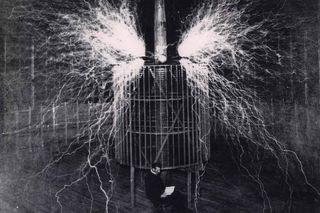
Innumerable patents
The exact number of patents held by Tesla is disputed, as some likely remain undiscovered, historians believe. He is thought to be responsible for at least 300 inventions (many related to each other), in addition to countless unpatented ideas that he developed over the course of his career.
Alternating current
Perhaps Tesla’s most famous and important idea, alternating current (AC), was an answer to his old boss Edison’s inefficient — as Tesla put it — use of direct current (DC) in the new electric age. While DC power stations sent electricity flowing in one direction in a straight line, alternating currents change direction quickly, and could do so at a much higher voltage.
Indeed, Edison’s power lines that crisscrossed the Atlantic seaboard were short and weak due to DC, while AC was able to send electricity much farther afield. Though Thomas Edison had more resources and an established reputation, Tesla’s AC power grids eventually became the norm. Several dozen of Tesla’s patents were related to alternating current science.
The Tesla Coil
Since named for its inventor, this impressive machine transforms energy into extremely high voltage charges, creating powerful electrical fields capable of producing spectacular electrical arcs. Besides the lightning-bolt shows they can put on, Tesla Coils had very practical applications in wireless radio technology and some medical devices. Tesla experimented with his coils in the last years of the 19th century.
The true father of radio
Tesla tinkered with radio waves as early as 1892, debuting a radio wave-controlled boat in 1898 with great fanfare at an electrical exhibition at New York’s Madison Square Garden. Expanding on the technology, he patented more than a dozen ideas related to radio communication, before Italian inventor Guglielmo Marconi leapt ahead of a financially unstable Tesla and completed the first transatlantic radio transmission (a bit of Morse code, sent from England to Newfoundland) on the back of Tesla’s science. Marconi and Tesla’s battle for intellectual recognition waged for decades before the U.S. Supreme Court ultimately revoked some of Marconi’s patents in 1943, restoring Tesla as the father of radio, at least legally.
Tesla quotes
“Money does not represent such a value as men have placed upon it. All my money has been invested into experiments with which I have made new discoveries enabling mankind to have a little easier life.” — "A Visit to Nikola Tesla" by Dragislav L. Petković in Politika (April 1927)
“The scientific man does not aim at an immediate result. He does not expect that his advanced ideas will be readily taken up. His work is like that of the planter — for the future. His duty is to lay the foundation for those who are to come, and point the way. He lives and labors and hopes.” — “Radio Power Will Revolutionize the World" in Modern Mechanics and Inventions (July 1934)
“The scientists of today think deeply instead of clearly. One must be sane to think clearly, but one can think deeply and be quite insane.” — “Radio Power Will Revolutionize the World" in Modern Mechanics and Inventions (July 1934)
Further reading:
- Tesla Memorial Society
Sign up for the Live Science daily newsletter now
Get the world’s most fascinating discoveries delivered straight to your inbox.

Nuclear fusion reactor in South Korea runs at 100 million degrees C for a record-breaking 48 seconds
How do lasers work?
Low tides reveal Bronze Age fortress that likely defended against Irish mainland
Most Popular
By Anna Gora December 27, 2023
By Anna Gora December 26, 2023
By Anna Gora December 25, 2023
By Emily Cooke December 23, 2023
By Victoria Atkinson December 22, 2023
By Anna Gora December 16, 2023
By Anna Gora December 15, 2023
By Anna Gora November 09, 2023
By Donavyn Coffey November 06, 2023
By Anna Gora October 31, 2023
By Anna Gora October 26, 2023
- 2 James Webb telescope confirms there is something seriously wrong with our understanding of the universe
- 3 April 8 total solar eclipse: Everything you need to know
- 4 'Gambling with your life': Experts weigh in on dangers of the Wim Hof method
- 5 Cholesterol-gobbling gut bacteria could protect against heart disease
- 2 Hundreds of mysterious 'rogue' planets discovered by James Webb telescope may finally have an explanation
- 3 Antarctica is covered in volcanoes, could they erupt?
- 4 Longest eclipse ever: How scientists rode the supersonic Concorde jet to see a 74-minute totality
- 5 Low tides reveal Bronze Age fortress that likely defended against Irish mainland
The fascinating life of Nikola Tesla, the genius who electrified the world and dreamed up death rays
July 10 is the birthday of Nikola Tesla, who would have been 161 years old today.
It's a good time to celebrate the life of the Serbian-American engineer and physicist: Without Tesla, you might not be able to affordably power your home, let alone read this sentence.
Tesla filed more than 300 patents during his 86 years of life, and his inventions helped pave the way for alternating current (AC), electric motors, radios, fluorescent lights, lasers, and remote controls, among many other things.
Some of his ideas later in life, however, seem strange even now. He once described plans for a death ray, for example, and alluded to another idea for an impenetrable "wall of force" to block and destroy foreign invasions.
Here's a glimpse into the remarkable life of one of history's most important — and eccentric — geniuses.
Tanya Lewis wrote a previous version of this story.
Nikola Tesla was born on July 10, 1856 in Smiljan in the Austo-Hungarian Empire (modern-day Croatia).
His father, Milutin Tesla, was a Serbian Orthodox Priest and his mother, Djuka Mandic, was an inventor of household appliances.
Source: Tesla Society
In college, Tesla was initially interested in studying physics and mathematics, but soon became fascinated by electricity.
He attended the Realschule, Karlstadt in 1873, the Polytechnic Institute in Graz, Austria and the University of Prague. He took a job as an electrical engineer at a telephone company in Budapest in 1881.
He developed the concept of an induction motor while walking in a park with a friend.
Later, while he was in Strasbourg, France in 1883, he built a prototype of the induction motor (an AC motor powered by electromagnetic induction) and tested it successfully. Since he couldn't get anyone in Europe interested in it, Tesla came to the United States to work for Thomas Edison in New York.
Tesla's childhood dream was to harness the power of Niagara Falls.
In 1895, he designed the first hydroelectric power plant in the Falls, a major victory for alternating current. A statue was later erected on Goat Island in Tesla's honor.
For all his brilliance, Tesla was pretty eccentric. At one point, he stopped eating solid foods.
He ate honey, drank bowls of warm milk, and made a potion from vegetables like artichokes and celery.
Source: " The Life and Times of Nikola Tesla - Biography of a Genius "
He claimed he never slept for more than two hours at a time.
However, Tesla did admit to dozing off sometimes to "recharge his batteries." According to one report, he once worked for 84 hours without sleeping.
Source: " Prodigal Genius: The Life of Nikola Tesla "
In 1882, Tesla discovered the rotating magnetic field, a principle of physics that forms the basis for nearly all devices that use AC power.
He used this principle to construct the AC induction motor and polyphase system for the generation, transmission, distribution and use of electric power.
While Tesla was working in Thomas Edison’s lab in New Jersey, the two fought a 'war' with over the best form of electrical current.
Edison favored direct current or DC (which flows in one direction), while Tesla favored alternating current or AC (which changes direction periodically). This led to the "war of the currents," which Tesla eventually won because of AC's greater efficiency.
Tesla also worked closely with industrialist and inventor George Westinghouse, and their partnership helped establish electricity across America.
Tesla wrote a classic paper called "A New System of Alternating Current Motors and Transformers," in 1888, in which he introduced the concept of his motors and electrical systems. The work caught Westinghouse's attention, and they ended up partnering to work on bringing electricity to the rest of the country.
Tesla's AC-driven system remains the world standard for delivering electricity today.
He also invented the Tesla coil, a device that is widely used today in radios, TV sets, and other electronics.
In 1891, Tesla developed an induction coil that produced high-frequency alternating currents, now known as the Tesla coil. He used it in experiments to produce electric lighting, X-rays, and wireless power, and it became the basis of radio and TV. Today, the coils are mostly used in educational displays and entertainment.
Source: PBS.org
Tesla patented the basic system of radio in 1896.
The invention of radio is often credited to Guglielmo Marconi, who made the first transatlantic radio transmission in 1901. But Tesla developed patents for the basic elements of a radio transmitter that were later used by Marconi — a point that led the two into a court battle.
Source: Earlyradiohistory.us
Tesla also dreamed up two concepts that remained purely theoretical: the 'death ray' and an 'impenetrable wall of force' that'd ward off foreign invasions.
T he FBI kept a dossier on Tesla throughout his life in the US, but kept it classified until 2011, when the bureau publicly released 250 pages .
In 1943, when Tesla died, electrical engineer and military technology researcher John G. Trump — who an April 2016 New Yorker article dubbed President Trump's "nuclear" uncle — examined Tesla's effects for the FBI and reported his findings.
John Trump reportedly told the Bureau: "Tesla's 'thoughts and efforts during at least the past 15 years were primarily of a speculative, philosophical, and somewhat promotional character,' but 'did not include new, sound, workable principles or methods for realizing such results.'"
Source: Business Insider
Through his life, Tesla never married, but he once claimed to love a pigeon.
Tesla used to take walks to the park to feed the pigeons. He developed an unusual relationship with a white pigeon that used to visit him every day.
" I loved that pigeon as a man loves a women, and she loved me. As long as I had her, there was a purpose to my life," Tesla reportedly said.
Source: Tesla Society and Tesla Universe

- Main content
Nikola Tesla
Nikola Tesla was a well-known Serbian-American inventor, electrical engineer, and mechanical engineer who was awarded about 300 patents for his inventions. He was born in Smiljan, Croatia on July 10, 1856. Tesla’s mother, Duka, was an early inspiration to him as she invented small household appliances during his childhood. Tesla clearly inherited his mother’s inventive spirit, as he went on to develop some of the most important inventions in history, such as alternating current (AC) electricity and the Tesla Coil.
Growing up, Tesla studied in various places in Europe including Germany, Austria, and Prague. In the late 1870s, he had the opportunity to go to Budapest where he worked at the Telephone Exchange. While in Budapest he made improvements to some inventions and came up with his idea for the induction motor, which produced an alternating current system and used electromagnetic induction from the magnetic field, instead of electrical connections to the rotor. He later tried to gain attention for his proposed invention but didn’t gain any recognition. At age 28, in 1884, he decided to move to the U.S. where there were more opportunities. While in the U.S. Tesla met Thomas Edison and worked alongside him for a couple of months. When Edison refused to pay Tesla for his work, Tesla decided to leave and pursue his own journey as an inventor.
In 1887, Tesla received funding to start a company from American entrepreneur George Westinghouse. Tesla was able to finalize his induction motor to compete against Edison’s direct current system. Tesla’s motor was certainly an asset during the Industrial Revolution of the 19th century as it was found to be more durable, cheaper, and more efficient than his competitors. Tesla licensed his invention to the Westinghouse Company in 1888. In 1893, Tesla achieved a milestone at the World’s Columbian Exposition in Chicago. This exposition was the turning point for public acceptance of alternating current as it dispelled the public’s doubts about the safety and reliability of alternating current. . The exposition demonstrated that alternating current could run smoothly and it later became the main standard for power systems.
In 1895, Tesla’s lab burned down in New York, which destroyed most of his work including notes, designs, patents and inventions. After the trauma of losing everything, Tesla moved to Colorado Springs. During this time, Tesla thought of the idea of a world-wireless-network for communication. He was able to network with J.P. Morgan, a wealthy financier, and together they set up a laboratory back in Long Island, New York.
In 1901 another famous inventor, Guglielmo Marconi, transmitted Morse code from England to Canada, but Tesla believed that Marconi stole some of his world-wireless-network ideas. The following year, Tesla proposed a different angle of communication and came up with the “World Telegraphy System,” in which he envisioned transmitting stations would collect and broadcast news stories through individual receivers. However, this early idea of radio was shut down and Tesla lost the funding from J.P. Morgan that supported his lab because his idea didn’t seem feasible. Investors started to favor Marconi because of his previous success and began funding him instead.
Tesla’s last living years were spent in poverty until he died on January 7, 1943. Six months after his death, the United States Supreme Court awarded the patent of radio back to Tesla. The reason for why the U.S. revoked Tesla’s patent for radio in the first place is debated, but many assume it is because of Marconi’s robust financial backing. . Although the last of Tesla’s years were tragic, he is remembered as an accomplished inventor who made significant advancements in the world of communication, electricity, and manufacturing.
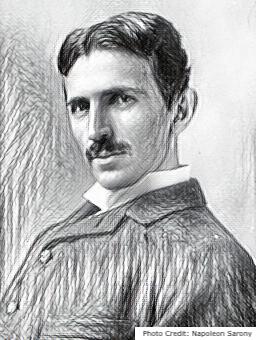
Don't Miss Our Next Newsletter!
222 Third Street, Suite 0300 Cambridge, MA 02142 [email protected] » 617-253-3352
- Scientific Methods
- Famous Physicists

Nikola Tesla
Amongst many inventors throughout the history of science, one of the most prominent inventors was Nikola Tesla. Nikola Tesla was an inventor, an electrical engineer and a mechanical engineer. Nikola Tesla was also a Serbian-American Engineer who was highly regarded for his achievements in energy for the advancement and growth of Alternating Current (AC) in electrical systems. He also provided his extraordinary contributions to electromagnetism and wireless radio communications.
Table of Contents
Introduction of nikola tesla, nikola tesla’s education, awards and achievements, contribution in alternating currents (ac).
- Tesla Turbine
Nikola Tesla was a mastermind inventor who shaped some ground-breaking inventions. He was an engineer who was awarded about 300 patents for his innovations in history. He also collaborated with many prominent names and companies in history.
Nikola Tesla was born on 10th July in 1856 to a priest father in the Croatian town of Smiljan (Austrian Empire).
Tesla’s inventions constitute significant technological breakthroughs throughout his lifetime. He invented the widely used Tesla coil and induction coil in radio technology. This math and physics genius made a substantial impact on our daily lives through his important innovations.

Tesla studied at several places in Europe, which also included Germany, Austria, and Prague. At the Austrian Polytechnic in Graz, he pursued electrical engineering, and later, joined the Charles-Ferdinand University in Prague.
He had the opportunity to go to Budapest in the late 1870s, where he worked at the Telephone Exchange. He made enhancements to some inventions and came up with an idea for the induction motor, which produced an alternating current system, and used electromagnetic induction from the magnetic field instead of electrical connections to the rotor.
At age 28, in 1884, he decided to move to the U.S., in search of more opportunities. Tesla met Thomas Edison in the U.S. Tesla worked alongside him for a couple of months. When Edison declined to pay Tesla for his work, Tesla decided to quit and pursue his journey as an inventor.
Tesla’s legacy holds nine decorations with certificates of honours with which the scientist was decorated between 1892 and 1939.
Nikola Tesla’s best-known invention was Alternating Current . AC power permits electricity to be sent over extended distances much more efficiently.
Tesla’s AC patents were accepted by Westinghouse and used for the lighting of the Chicago World’s Fair. Tesla’s apparent essential skill for invention and profound imagination made him one of the most prolific inventors of our times. Clearly, his genius was unmatched in his time and perhaps ours.
Perhaps the most well-known symbol of Tesla’s work is the Tesla coil. It is a transformer that produces high-voltage, low-current, high-frequency alternating-current electricity.
A Tesla coil comprises a primary coil and secondary coil, each coil with its own capacitor to store electrical energy. A spark gap links both the coils and capacitors. The system is powered by a high-voltage source. As the current flows out of the capacitor down the primary coil, a magnetic field is created.
This field breaks down quickly and produces an electric current in the secondary coil. The subsequent high-frequency voltage can lighten fluorescent bulbs several feet away with no wire connection.
Watch Video :Charging By Induction

Tesla revealed that he could use his coils to transmit and receive powerful radio signals before his lab burned down. Tuning those radio signals to resonate at the same frequency radio signals could be sent and received. He was ready to convey a signal 50 miles from his lab to West Point, New York, by early 1895. But the fire in Tesla’s lab demolished his work.
Guglielmo Marconi (inventor of the wireless telegraph system) established long-distance demonstrations in the future, and he used a Tesla oscillator to spread the signals across the English Channel.
Tesla Turbine and Induction Motor
As a way to make a change in the world, Tesla saw the growth of piston engines in the automobile industry. Therefore, Tesla developed his own turbine engine that used the combustion process to rotate the disks.
With 90% of fuel efficiency, this engine was a significant achievement.
Also, Nikola Tesla and Galileo Ferraris independently invented the first AC commutator-free three-phase induction motor in 1885, and it was Tesla who filed for a patent first. This type of motor is generally used in vacuums, blow dryers, and power tools, even today.
Frequently Asked Questions
Define alternating current..
Alternating current is an electric current that periodically reverses direction, in contrast to DC which flows in only one direction.
Where is Nikola Tesla Tower located?
Shoreham, Long Island, Newyork
Nikola Tesla was most famous for which inventions?
Tesla Coil, Alternating Current (AC) and discovery of rotating magnetic field.
What is a Tesla Coil?
A form of Induction coil used for producing high-frequency alternating currents.
Which principle is responsible for the working of induction motor?
Electromagnetic Induction.
Leave a Comment Cancel reply
Your Mobile number and Email id will not be published. Required fields are marked *
Request OTP on Voice Call
Post My Comment
- Share Share
Register with BYJU'S & Download Free PDFs
Register with byju's & watch live videos.

Talk to our experts
1800-120-456-456
- Nikola Tesla Biography

Who is Nikola Tesla?
Nikola Tesla is regarded as one of history's most influential inventors, with discoveries in the area of electricity that were far ahead of their time and continue to have an impact on technology today. Tesla died penniless and without the acclaim that he would eventually receive over a century later, despite his achievements.
Tesla's career as an inventor began early; at the age of 26, he is said to have sketched up the concepts for a rotating magnetic field while working at the Central Telegraph Office in Budapest, an essential innovation that is currently employed in many electromechanical devices. This huge breakthrough paved the way for many of his other innovations, including the alternating current motor, and eventually brought him to New York City in 1884, where he was drawn by Thomas Edison and his groundbreaking engineering firm, Edison Machine Works.
The “genius who illuminated the world” is now memorialised with an electrical unit known as the Tesla, as well as streets, statues, and a prominent engineer's award in his honour, but he wasn't always so successful in life. But Tesla was a scientist, who had deep theories always in mind. Let’s discuss Nikola Tesla Information here completely.
(Image will be uploaded soon)
Where Was Nikola Tesla Born?
Nikola Tesla was born in 1856 in the town of Smiljan, which is now part of Croatia but was once part of the Austro-Hungarian Empire. His father was a priest, while his mother, despite her lack of formal education, worked with machinery and was known for her incredible memory. Keep reading the article for the entire Nikola Tesla biography.
Nikola Tesla Education Qualification
Tesla's family relocated to nearby Gospi in 1862, where Tesla's father served as a parish priest. Nikola finished primary school and then moved on to middle school. Tesla travelled to Karlovac in 1870 to attend the Higher Real Gymnasium, where classes were taught in German, as was the case throughout the Austro-Hungarian Military Frontier. Tesla later wrote that his physics professor sparked his interest in electricity demonstrations. These displays of this "mystery phenomenon" made Tesla want to "know more about this wonderful power," he said. Tesla's ability to complete integral calculus in his mind led his teachers to suspect he was cheating. He graduated in 1873 after completing a four-year term in three years.
Tesla returned to Smiljan in 1873. He developed cholera shortly after arriving, was bedridden for nine months, and came close to death several times. Tesla's father pledged to send him to the top engineering school if he recovered from his illness in a time of despair. Tesla escaped conscription into the Austro-Hungarian Army in Smiljan in 1874 by fleeing to Tomingaj, southeast of Lika. He went there dressed as a hunter and explored the mountains. Tesla claimed that his contact with nature made him physically and intellectually stronger. While at Tomingaj, he studied a lot of books and later claimed that Mark Twain's works had miraculously helped him recover from his former illness.
Tesla received a Military Frontier scholarship to the Imperial-Royal Technical College in Graz in 1875. Tesla never missed a lecture during his first year, obtained the highest marks possible, passed nine tests, founded a Serb cultural society, and even received a letter of congratulations from the dean of the technical college to his father, stating, "Your son is a star of the first rank." Professor Jakob Pöschl's thorough lectures on electricity enthralled Tesla while he was in Graz.
Tesla Discoveries
Tesla discovered, designed, and developed ideas for a number of significant innovations, the majority of which were officially patented by other inventors, including dynamos (electrical generators comparable to batteries) and the induction motor, over the course of his career. He was also a pioneer in the development of radar, X-ray, remote control, and the rotating magnetic field, which is the foundation of most AC machinery. Tesla is most recognised for his contributions to AC power and the Tesla coil, which he invented.
1. AC Electrical System
Alternating current (AC), perhaps Tesla's most famous and essential innovation, was a response to his old boss Edison's inefficient (as Tesla called it) use of direct current (DC) in the new electric age. Unlike DC power plants, which carry energy in a straight line in one direction, alternating currents change direction quickly and at a significantly greater voltage. Because of DC, Edison's power lines that crossed the Atlantic coast were short and weak, whereas AC could deliver current considerably further. Tesla's AC power grids finally became the standard, despite the fact that Thomas Edison had more resources and a better reputation.
2. Hydroelectric Power Plant
At Niagara Falls, Tesla developed one of the first AC hydroelectric power facilities in the United States in 1895. It was used to power the city of Buffalo, New York the next year, a feat that was widely recognised around the world and aided AC electricity's progress toward becoming the world's power system.
3. Tesla Coil
Tesla patented the Tesla coil in the late 1800s, which established the groundwork for wireless technology and is still used in radio technology today. The Tesla coil is an inductor that was used in many early radio transmission antennas as the heart of an electrical circuit. The coil and a capacitor work together to resonate current and voltage across the circuit from a power source. Tesla studied fluorescence, x-rays, radio, wireless power, and electromagnetic radiation in the earth and its atmosphere with his coil.
4. Death Ray
Tesla subsequently returned to work, largely as a consultant, after suffering a nervous breakdown following the end of his free energy project. Tesla even caught the FBI's attention with his claims of developing a strong "death ray," which had attracted the Soviet Union's interest during WWII.
5. Free Energy
Tesla began work on his most ambitious project yet around 1900, after becoming obsessed with the wireless transmission of energy. He planned to build a global, wireless communication system — to be transmitted through a large electrical tower — for sharing information and providing free energy throughout the world. Tesla began work on the free energy project in earnest in 1901, with finance from a group of investors that included financial titan J. P. Morgan, constructing and building a facility with a power plant and a gigantic transmission tower on a site on Long Island, New York, that became known as Wardenclyffe.
Tesla also experimented with radio waves as early as 1892, displaying a radio wave-controlled boat in 1898 at an electrical show in New York's Madison Square Garden to much acclaim. Expanding on the technology, Tesla patented more than a dozen radio communication ideas before Italian inventor Guglielmo Marconi beat Tesla to the punch and completed the first transatlantic radio transmission using Tesla's research. The dispute for intellectual recognition between Marconi and Tesla lasted decades before the United States Supreme Court cancelled part of Marconi's patents in 1943, restoring Tesla as the founder of radio, at least legally.
Nikola Tesla vs. Thomas Edison
Tesla came to the United States in 1884 with nothing but the clothing on his back and a letter of introduction to Thomas Edison, the renowned inventor and business mogul whose DC-based electrical works were quickly becoming the industry standard. Edison hired Tesla, and the two men spent the next few years working side by side on improving Edison's innovations. Several months later, the two parted ways due to a tense business-scientific relationship, which historians attribute to their polar opposite personalities: while Edison was a powerful personality focused on marketing and financial success, Tesla was commercially out-of-touch and fragile.
Nikola Tesla Facts
Tesla was a scientist, physicist, engineer, and inventor. Alternating current (AC), the form of electricity that fuels civilization and is essential for lighting, was one of his greatest innovations.
Tesla became close friends with Mark Twain after claiming that reading author Mark Twain's writing helped him recover from a terrible illness.
Tesla was given $50,000 by Thomas Edison to upgrade his existing electricity-generating technology. Tesla was successful, although Edison later stated that he was joking. Tesla abruptly resigned.
According to several who recounted Tesla's obsessive rituals and superstitions, he may have suffered from what is now known as Obsessive-Compulsive Disorder (OCD).
Tesla never married. Tesla once expressed his view that he would never be worthy of a lady. He devoted himself to scientific research.
Tesla was a multilingual genius with a photographic memory.
Tesla's alternating current (AC) clashed with Edison's direct current (DC), which required power plants to be built every square mile, rendering DC wasteful in comparison to AC.
To show that AC was too unsafe to utilise, Edison staged gruesome public demonstrations of animal electrocutions.
Tesla once stated that he was in love with a white pigeon because he feared that personal connection would interfere with his study.
Nikola Tesla was a Serbian-American inventor and engineer who developed the rotating magnetic field, which is the foundation of most alternating-current machines. He also invented the three-phase electric power transmission system. In 1884, he immigrated to the United States and sold George Westinghouse the patent rights to his system of alternating-current dynamos, transformers, and motors. He created the Tesla coil, an induction coil that is widely utilised in radio technology, in 1891. Tesla was born into a Serbian family. His father was an Orthodox priest, and his mother, though uneducated, was quite brilliant. He developed incredible imagination and originality, as well as a poetic touch, as he grew older. Historians believe that several of Tesla's patents have yet to be discovered, hence the precise number of patents he holds is contested. He is credited with at least 300 innovations (many of which are related), as well as many unpatented ideas that he developed over the course of his career.

FAQs on Nikola Tesla Biography
1. When is Nikola Tesla’s Birthday?
Ans: Nikola Tesla was born in Smiljan, Austrian Empire, on July 9th or 10th, 1856. (now in Croatia).
2. How Did Nikola Tesla Die & Nikola Tesla Age at Death Was?
Ans: Tesla died of coronary thrombosis at the age of 86 in New York City, where he had lived for nearly 60 years, on January 7, 1943. The legacy of Tesla's work, on the other hand, continues to this day. Near the site of his former New York City laboratory, at the intersection of 40th Street and 6th Avenue, a street sign identifying "Nikola Tesla Corner" was put up in 1994.
3. Why Was Tesla’s Lab Burned?
Ans: During the construction of the tower, Tesla ran out of money and was foreclosed on twice. Assets were liquidated to pay off his debts, much as they did with his prior Colorado Springs lab. The US government detonated a bomb in the tower in 1917, thinking that it was being used by German spies during World War I.
- About Tesla
Biography of Nikola Tesla
Nikola tesla biography.
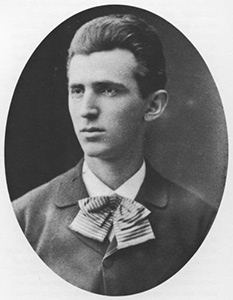
Already at an early age, Tesla shows insight and ambition. There is an anecdote from his life related to his first sight of Niagara Falls, where he announced to his uncle Josip that one day, he would put a big wheel there and use the potential of the falls. This was his childhood dream.
Tesla started school in Smiljan, where he learned German, mathematics, and religion. After moving to Gospic, he carried forward with elementary school finishing Preparatory Elementary School and Lower Real Gymnasium. From Gospic, he left for Rakovac, located near Karlovac, and finished Higher Real Gymnasium.
When Tesla completed high school, he avoided forced enlistment in an ongoing war, and went to study physics and other disciplines at the Polytechnic School in Graz, located south of Vienna. However, he did not stay to complete his degree. Still, he later enrolled at the University of Prague, where he advanced his knowledge of wave mechanics (and indirectly AC), working with Professor Ernst Mach.
After his studies, Tesla began his career as an electrical engineer with a telephone company in Budapest in 1881. Tinkering with equipment as a telephone line repairman, he created a kind of amplifier, a forerunner of loudspeakers, which he never filed as his own patent.
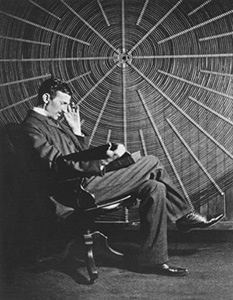
Tesla started to work in Edison’s lab in New Jersey, where he began to improve Edison’s line of dynamos. This is the point where his divergence of opinion with Edison over direct current versus alternating current began. Due to disagreements with Edison, he decides to found his own company.
In 1885, he founded a company called the Tesla Electric and Manufacturing Company, which went bankrupt a year later. After that, Tesla is forced to finance himself through hard manual work. Two years later, he founded a new company called Tesla Electric Company. That same year, 1887, Tesla decided to register his patents, which included a multi-phase electric power transmission motor system, an induction motor, generators and transformers. A year later, in partnership with George Westinghouse, Tesla sold his alternating current patents for $1 million (some sources claim he received only $60,000).
After going to Europe and visiting Lika, Tesla's birthplace, in 1890, he began researching high-frequency current, where after a year, he constructed the first transformer, the so-called Tesla coil. In 1892, he returned to Lika for his mother's funeral.
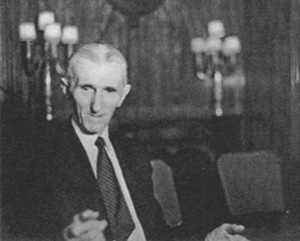
In 1896 the first hydroelectric plant was commissioned at the foot of Niagara Falls and used Tesla's alternating current patents. In 1899, Tesla built an experimental station in Colorado Springs to experiment with high voltage, high-frequency electricity and other phenomena. There he worked for one year, and after that, he moved to Long Island, where he never had a chance to finish his research on wireless transmission of electricity because J.P. Morgan stopped to finance him.
From 1910 to 1922, Tesla continued with his engineering inventions, where 1919, Tesla's autobiography „My inventions” was first published. He was awarded the Edison medal in 1917 and, in 1926, received an honorary doctorate from the University of Zagreb. In 1937 he earned two honorary doctorates from the Polytechnic University in Graz and the University of Paris.
Tesla spent his life in hotels, and he lived in the Hotel New Yorker for the last ten years. He died there on January 7th, 1943, in his apartment on the 33rd floor. A state funeral was held at St. John the Divine Cathedral in New York City. He was cremated, and his ashes were interned in a golden sphere, Tesla’s favorite shape, which was handed over to the Tesla Museum in Belgrade.
Our website also has a mobile app. Would you like to install it?
Subscribe to our newsletter.
Stay connected with us. Subscribe to our newsletter to find out what we have recently discovered and published about Nikola Tesla.

- ABOUT TESLA
The Rise and Fall of Nikola Tesla and His Tower
The inventor’s vision of a global wireless-transmission tower proved to be his undoing
/https://tf-cmsv2-smithsonianmag-media.s3.amazonaws.com/accounts/headshot/gilbert-king-240.jpg)
Gilbert King
By the end of his brilliant and tortured life, the Serbian physicist, engineer and inventor Nikola Tesla was penniless and living in a small New York City hotel room. He spent days in a park surrounded by the creatures that mattered most to him—pigeons—and his sleepless nights working over mathematical equations and scientific problems in his head. That habit would confound scientists and scholars for decades after he died, in 1943. His inventions were designed and perfected in his imagination.
Tesla believed his mind to be without equal, and he wasn’t above chiding his contemporaries, such as Thomas Edison , who once hired him. “If Edison had a needle to find in a haystack,” Tesla once wrote, “he would proceed at once with the diligence of the bee to examine straw after straw until he found the object of his search. I was a sorry witness of such doing that a little theory and calculation would have saved him ninety percent of his labor.”
But what his contemporaries may have been lacking in scientific talent (by Tesla’s estimation), men like Edison and George Westinghouse clearly possessed the one trait that Tesla did not—a mind for business. And in the last days of America’s Gilded Age, Nikola Tesla made a dramatic attempt to change the future of communications and power transmission around the world. He managed to convince J.P. Morgan that he was on the verge of a breakthrough, and the financier gave Tesla more than $150,000 to fund what would become a gigantic, futuristic and startling tower in the middle of Long Island, New York. In 1898, as Tesla’s plans to create a worldwide wireless transmission system became known, Wardenclyffe Tower would be Tesla’s last chance to claim the recognition and wealth that had always escaped him.
Nikola Tesla was born in modern-day Croatia in 1856; his father, Milutin, was a priest of the Serbian Orthodox Church. From an early age, he demonstrated the obsessiveness that would puzzle and amuse those around him. He could memorize entire books and store logarithmic tables in his brain. He picked up languages easily, and he could work through days and nights on only a few hours sleep.
At the age of 19, he was studying electrical engineering at the Polytechnic Institute at Graz in Austria, where he quickly established himself as a star student. He found himself in an ongoing debate with a professor over perceived design flaws in the direct-current (DC) motors that were being demonstrated in class. “In attacking the problem again I almost regretted that the struggle was soon to end,” Tesla later wrote. “I had so much energy to spare. When I undertook the task it was not with a resolve such as men often make. With me it was a sacred vow, a question of life and death. I knew that I would perish if I failed. Now I felt that the battle was won. Back in the deep recesses of the brain was the solution, but I could not yet give it outward expression.”
He would spend the next six years of his life “thinking” about electromagnetic fields and a hypothetical motor powered by alternate-current that would and should work. The thoughts obsessed him, and he was unable to focus on his schoolwork. Professors at the university warned Tesla’s father that the young scholar’s working and sleeping habits were killing him. But rather than finish his studies, Tesla became a gambling addict, lost all his tuition money, dropped out of school and suffered a nervous breakdown. It would not be his last.
In 1881, Tesla moved to Budapest, after recovering from his breakdown, and he was walking through a park with a friend, reciting poetry, when a vision came to him. There in the park, with a stick, Tesla drew a crude diagram in the dirt—a motor using the principle of rotating magnetic fields created by two or more alternating currents. While AC electrification had been employed before, there would never be a practical, working motor run on alternating current until he invented his induction motor several years later.
In June 1884, Tesla sailed for New York City and arrived with four cents in his pocket and a letter of recommendation from Charles Batchelor—a former employer—to Thomas Edison, which was purported to say, “My Dear Edison: I know two great men and you are one of them. The other is this young man!”
A meeting was arranged, and once Tesla described the engineering work he was doing, Edison, though skeptical, hired him. According to Tesla, Edison offered him $50,000 if he could improve upon the DC generation plants Edison favored. Within a few months, Tesla informed the American inventor that he had indeed improved upon Edison’s motors. Edison, Tesla noted, refused to pay up. “When you become a full-fledged American, you will appreciate an American joke,” Edison told him.
Tesla promptly quit and took a job digging ditches. But it wasn’t long before word got out that Tesla’s AC motor was worth investing in, and the Western Union Company put Tesla to work in a lab not far from Edison’s office, where he designed AC power systems that are still used around the world. “The motors I built there,” Tesla said, “were exactly as I imagined them. I made no attempt to improve the design, but merely reproduced the pictures as they appeared to my vision, and the operation was always as I expected.”
Tesla patented his AC motors and power systems, which were said to be the most valuable inventions since the telephone. Soon, George Westinghouse, recognizing that Tesla’s designs might be just what he needed in his efforts to unseat Edison’s DC current, licensed his patents for $60,000 in stocks and cash and royalties based on how much electricity Westinghouse could sell. Ultimately, he won the “War of the Currents,” but at a steep cost in litigation and competition for both Westinghouse and Edison’s General Electric Company.
Wardenclyffe Tower. Photo: Wikipedia
Fearing ruin, Westinghouse begged Tesla for relief from the royalties Westinghouse agreed to. “Your decision determines the fate of the Westinghouse Company,” he said. Tesla, grateful to the man who had never tried to swindle him, tore up the royalty contract, walking away from millions in royalties that he was already owed and billions that would have accrued in the future. He would have been one of the wealthiest men in the world—a titan of the Gilded Age.
His work with electricity reflected just one facet of his fertile mind. Before the turn of the 20th century, Tesla had invented a powerful coil that was capable of generating high voltages and frequencies, leading to new forms of light, such as neon and fluorescent, as well as X-rays. Tesla also discovered that these coils, soon to be called “Tesla Coils,” made it possible to send and receive radio signals. He quickly filed for American patents in 1897, beating the Italian inventor Guglielmo Marconi to the punch.
Tesla continued to work on his ideas for wireless transmissions when he proposed to J.P. Morgan his idea of a wireless globe. After Morgan put up the $150,000 to build the giant transmission tower, Tesla promptly hired the noted architect Stanford White of McKim, Mead, and White in New York. White, too, was smitten with Tesla’s idea. After all, Tesla was the highly acclaimed man behind Westinghouse’s success with alternating current, and when Tesla talked, he was persuasive.
“As soon as completed, it will be possible for a business man in New York to dictate instructions, and have them instantly appear in type at his office in London or elsewhere,” Tesla said at the time. “He will be able to call up, from his desk, and talk to any telephone subscriber on the globe, without any change whatever in the existing equipment. An inexpensive instrument, not bigger than a watch, will enable its bearer to hear anywhere, on sea or land, music or song, the speech of a political leader, the address of an eminent man of science, or the sermon of an eloquent clergyman, delivered in some other place, however distant. In the same manner any picture, character, drawing or print can be transferred from one to another place. Millions of such instruments can be operated from but one plant of this kind.”
White quickly got to work designing Wardenclyffe Tower in 1901, but soon after construction began it became apparent that Tesla was going to run out of money before it was finished. An appeal to Morgan for more money proved fruitless, and in the meantime investors were rushing to throw their money behind Marconi. In December 1901, Marconi successfully sent a signal from England to Newfoundland. Tesla grumbled that the Italian was using 17 of his patents, but litigation eventually favored Marconi and the commercial damage was done. (The U.S. Supreme Court ultimately upheld Tesla’s claims, clarifying Tesla’s role in the invention of the radio—but not until 1943, after he died.) Thus the Italian inventor was credited as the inventor of radio and became rich. Wardenclyffe Tower became a 186-foot-tall relic (it would be razed in 1917), and the defeat—Tesla’s worst—led to another of his breakdowns. ”It is not a dream,” Tesla said, “it is a simple feat of scientific electrical engineering, only expensive—blind, faint-hearted, doubting world!”
Guglielmo Marconi in 1903. Photo: Library of Congress
By 1912, Tesla began to withdraw from that doubting world. He was clearly showing signs of obsessive-compulsive disorder, and was potentially a high-functioning autistic. He became obsessed with cleanliness and fixated on the number three; he began shaking hands with people and washing his hands—all done in sets of three. He had to have 18 napkins on his table during meals, and would count his steps whenever he walked anywhere. He claimed to have an abnormal sensitivity to sounds, as well as an acute sense of sight, and he later wrote that he had “a violent aversion against the earrings of women,” and “the sight of a pearl would almost give me a fit.”
Near the end of his life, Tesla became fixated on pigeons, especially a specific white female, which he claimed to love almost as one would love a human being. One night, Tesla claimed the white pigeon visited him through an open window at his hotel, and he believed the bird had come to tell him she was dying. He saw “two powerful beans of light” in the bird’s eyes, he later said. “Yes, it was a real light, a powerful, dazzling, blinding light, a light more intense than I had ever produced by the most powerful lamps in my laboratory.” The pigeon died in his arms, and the inventor claimed that in that moment, he knew that he had finished his life’s work.
Nikola Tesla would go on to make news from time to time while living on the 33rd floor of the New Yorker Hotel. In 1931 he made the cover of Time magazine, which featured his inventions on his 75th birthday. And in 1934, the New York Times reported that Tesla was working on a “Death Beam” capable of knocking 10,000 enemy airplanes out of the sky. He hoped to fund a prototypical defensive weapon in the interest of world peace, but his appeals to J.P. Morgan Jr. and British Prime Minister Neville Chamberlain went nowhere. Tesla did, however, receive a $25,000 check from the Soviet Union, but the project languished. He died in 1943, in debt, although Westinghouse had been paying his room and board at the hotel for years.
Books: Nikola Tesla, My Inventions: The Autobiography of Nikola Tesla , Hart Brothers, Pub., 1982. Margaret Cheney, Tesla: Man Out of Time , Touchstone, 1981.
Articles: “The Problem of Increasing Human Energy With Special References to the Harnessing of the Sun’s Energy,” by Nikola Tesla, Century Magazine , June, 1900. “Reflections on the Mind of Nikola Tesla,” by R. (Chandra) Chandrasekhar, Centre for Intelligent Information Processing Systems, School of Electrical, Electronic and Computer Engineering, Augst 27, 2006, http://www.ee.uwa.edu.au/~chandra/Downloads/Tesla/MindOfTesla.html”Tesla: Live and Legacy, Tower of Dreams,” PBS.org, http://www.pbs.org/tesla/ll/ll_todre.html. ”The Cult of Nikola Tesla,” by Brian Dunning, Skeptoid #345, January 15, 2003. http://skeptoid.com/episodes/4345. “Nikola Tesla, History of Technology, The Famous Inventors Worldwide,” by David S. Zondy, Worldwide Independent Inventors Association, http://www.worldwideinvention.com/articles/details/474/Nikola-Tesla-History-of-Technology-The-famous-Inventors-Worldwide.html. “The Future of Wireless Art by Nikola Tesla,” Wireless Telegraphy & Telephony , by Walter W. Massid & Charles R. Underhill, 1908. http://www.tfcbooks.com/tesla/1908-00-00.htm
Get the latest History stories in your inbox?
Click to visit our Privacy Statement .
/https://tf-cmsv2-smithsonianmag-media.s3.amazonaws.com/accounts/headshot/gilbert-king-240.jpg)
Gilbert King | | READ MORE
Gilbert King is a contributing writer in history for Smithsonian.com. His book Devil in the Grove: Thurgood Marshall, the Groveland Boys, and the Dawn of a New America won the Pulitzer Prize in 2013.

Reset Password
Back to login

Mocomi Kids
Tesla - Short Biography for Kids | Mocomi

- Famous People
https://mocomi.com/embed/content.php?c=96386|Nikola Tesla Biography|https://mocomi.com/nikola-tesla-biography/
Nikola Tesla Biography from Mocomi
Nikola Tesla Biography
If we ask you to look up the encyclopedia and find out who invented the radio or X-rays, neon lights that we use so often in the parties or the microwave that we use every day in the kitchen, you will never find anything about Nikola Tesla there. But the fact is otherwise! It was Nikola Tesla who did the main homework for the development of all the aforementioned things and the technology behind them. Yes, whether you believe it or not, the truth is that even though Tesla lived about a hundred and sixty years ago, he helped in developing technology that is used by all of us every single day. Sadly, he was never given the credit he truly deserved due to some unfortunate circumstances.
Early childhood
Nikola Tesla was born on July 10, 1856 in Smiljan, Croatia. His mother was an inventor and his father was a priest. His parents wanted him to become a priest like his father, but he had a passion for studying Science. He studied Science at the University of Prague and then started working for the Central Telephone Exchange in Budapest.
Tesla and Edison
At the age of 28, Tesla decided to go to America in pursuit of his desire to create new inventions. Upon moving to the United States, Tesla started working with the famous American inventor, Thomas Edison . While working together, a disagreement occurred between Tesla and Edison over Edison’s direct current and Tesla’s alternating current. This was also known as the “war of the currents.” Edison lamps were supplied with direct current which made them weak and inefficient. The direct current could not travel for long distances. On the other hand, Tesla’s alternating current was able to travel long distances on distribution lines, first in one direction, and then in another in multiple waves.
Tesla Electric Light Company
The disagreements created a lot of bitterness between the two scientists and Tesla eventually left Edison to create his own company called the Tesla Electric Light Company. His work caught the attention of another American inventor, George Westinghouse. They joined hands and started working together to generate electricity for the nation. Edison and Tesla were now in direct competition for providing America with energy and power. In 1893, Tesla’s AC electrical system was selected over Edison’s at the World’s Columbian Exposition in Chicago. It was a big accomplishment for Tesla. But, as luck would have it, Westinghouse ran into financial trouble and Tesla had to walk out of the partnership by selling his patent.
Wireless Broadcasting System
A year later, in 1896, Tesla created the world’s first hydroelectric power plant, which brought power to the city of Buffalo, New York. This invention brought Tesla considerable fame and recognition for a short while. During 1899 to 1900, Tesla continued to experiment with electricity and radio frequency magnetic waves in his laboratory based in Colorado. In 1900, supported by financier J.P. Morgan, Tesla started construction of a “Wireless Broadcasting System” tower on Long Island, New York. The aim of constructing this tower was to connect telephone and telegraph services, as well as broadcast images, reports, and weather information to every corner of the world. But due to certain reasons, J.P. Morgan had to cut funding and the tower had to be sold off.
Research gets stolen!
Tesla never had the gods of destiny working in his favor and there was more to come. During this period of turmoil, Tesla’s research work was stolen and used as their own by his contemporary scientists. Marconi is alleged to have passed off Tesla’s work on long-distance radio transmission as his own. Tesla decided to sue Marconi but it was too late. Though Tesla’s patents were prior to Marconi, the national press was out rightly supporting Marconi and the judge did not know a thing about modern technology. Naturally, Tesla lost his case. Much Later, in 1943, the US Supreme court conducted a detailed investigation, reversed the old decision given by the court and granted recognition to Tesla, nullifying Marconi patents.
You would be surprised to know that Tesla had over 800 different patents to his name, and despite that he was penniless. Ridicule from his own colleagues, lack of recognition by the public, drove him into a life of depression and self-imposed exile. He started jotting down his theories and research activities in his diaries and notebooks instead of getting them published anywhere. It is absolutely ironical that the man who invented the modern world died a pauper in a lonely hotel room on January 7, 1943 at the age of 86. Half a century after his death, scientists are still trying to comprehend and study his various theories. Many of them are just now being proven. It is indeed sad that we never managed to recognize and appreciate a true genius like Tesla in his lifetime. But, now that you know all about him, you can make an endeavor to give Nikola Tesla his due credit, no matter belated it is.
Famous Quotes
- “I dont care that they stole my idea . . I care that they dont have any of their own.”
- “My brain is only a receiver, in the Universe there is a core from which we obtain knowledge, strength and inspiration. I have not penetrated into the secrets of this core, but I know that it exists.”
- “The scientific man does not aim at an immediate result. He does not expect that his advanced ideas will be readily taken up. His work is like that of the planter – for the future. His duty is to lay the foundation for those who are to come, and point the way. He lives and labors and hopes.”
- “I do not think there is any thrill that can go through the human heart like that felt by the inventor as he sees some creation of the brain unfolding to success . . . Such emotions make a man forget food, sleep, friends, love, everything.”
- “The scientific man does not aim at an immediate result. He does not expect that his advanced ideas will be readily taken up. His work is like that of the planter—for the future. His duty is to lay the foundation for those who are to come, and point the way.”
- “All that was great in the past was ridiculed, condemned, combated, suppressed — only to emerge all the more powerfully, all the more triumphantly from the struggle.”
11 Interesting fun facts about Nikola Tesla
- Tesla suffered from insomnia and obsessive compulsive behavior (OCD).
- Tesla was a genius in the true sense of the word; he could speak 8 languages and had the ability to memorize a large amount of information. You could ask him to recite any portion from anywhere from his book and he would have done it in a jiffy!
- He was extremely fond of pigeons.
- The International Unit of Magnetic Flux Density is called “Tesla” after him.
- Tesla discovered X-ray radiation years before Roentgen was credited with its discovery.
- Tesla had proposed to build a radio controlled boat to the U.S. military.
- Though Tesla did not invent the light itself, he did find out the way to harness and distribute light over long distances.
- He also predicted the internet by once saying: “The household’s daily newspaper will one day be printed ‘wirelessly’ in the home during the night”.
- He claimed to have designed a death ray that could electrocute the enemy army from a distance of over 200 miles.
- His work with electromagnetic waves resulted in the invention of the radio, radar and the MRI, a type of X-Ray that has enabled us to look inside the human body
- During World War I, different countries were desperately looking for ways and means to detect enemy submarines under water. Tesla proposed the use of energy waves – the present day radar system technology – to detect the subs. However, the idea was rejected by all the scientists and military establishments as absurd and far-fetched. Sad, isn’t it? So, what happened thereafter? Well, the world then waited many more years for radars to be re-invented.
RELATED ARTICLES
Dr. B.R. Ambedkar Biography
William Shakespeare Biography
The Lumiere Brothers : Auguste and Louis
Sir Isaac Newton Biography
Stephen Hawking Biography
APJ Abdul Kalam
Galileo Galilei Biography
Steve Irwin – Wildlife Expert
Jawaharlal Nehru Biography
Adolf Hitler Biography
Nelson Mandela Biography
Albert Einstein Biography
Featured articles.
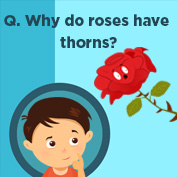
Why do roses have thorns?

Aarey Forest Facts
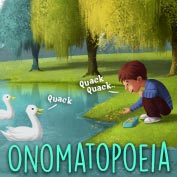
Onomatopoeia

Garlic and Onion are good for you!

Australia is drowning in Plastic Ba

Inside a Cricket Ball

Hampi, Karnataka

Winter Foods To Keep You Warm
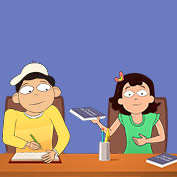
A new word is added to the dictiona
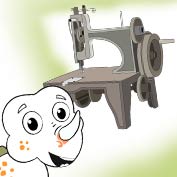
Invention of the Sewing Machine
Recommended articles.
Mocomi TimePass The Magazine – Issue 36
Mocomi TimePass The Magazine – Issue 39
Mocomi TimePass The Magazine – Issue 37
Mocomi TimePass The Magazine – Issue 35
Mocomi TimePass The Magazine – Issue 38
Mocomi TimePass The Magazine – Issue 40
Cancel reply.
Login or Register above to download the content.
Subscribe to Mocomag magazine

Nikola Tesla
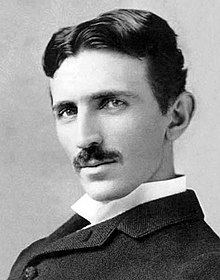
Nikola Tesla ( 10 July 1856 – 7 January 1943 ) was a Serbian physicist , inventor , and electrical engineer . Born in the Military Frontier (present-day Croatia ), he was a subject of the Austrian Empire who later became an American citizen.
- 1.1 The Problem of Increasing Human Energy (1900)
- 1.2 A Means for Furthering Peace (1905)
- 1.3 Man's Greatest Achievement (1908; 1930)
- 1.4 My Inventions (1919)
- 1.5 Mr. Tesla Explains Why He Will Never Marry (1924)
- 1.6 A Machine to End War (1937)
- 3 Quotes about Tesla
- 5 External links
Quotes [ edit ]

- "Experiments With Alternating Currents of Very High Frequency, and Their Application to Methods of Artificial Illumination" (20 May 1891)
- "Experiments With Alternate Currents Of High Potential And High Frequency" an address to the Institution of Electrical Engineers, London (February 1892)
- "Experiments With Alternate Currents Of High Potential And High Frequency" (February 1892)
- Electrical Engineer , (24 Jun 1892), 11, 609.
- Address at the Belgrade train station (1 June 1892)
- "On Light And Other High Frequency Phenomena" A lecture delivered before the Franklin Institute, Philadelphia (24 February 1893), and before the National Electric Light Association, St. Louis (1 March 1893), published in The Electrical review (9 June 1893), p. Page 683; also in The Inventions, Researches And Writings of Nikola Tesla (1894)
- "Roentgen Rays or Streams", Electrical Review (12 Aug 1896). Reprinted in The Nikola Tesla Treasury (2007), 307. By Nikola Tesla
- " The Problem of Increasing Human Energy ", Century Illustrated Magazine (June 1900)
- In 'The Problem of Increasing Human Energy: With Special Reference to the Harnessing of the Sun’s Energy', Century Illustrated Magazine (Jun 1900), 60, No. 2, 180.
- "The Transmission of Electric Energy Without Wires" in Electrical World and Engineer (5 March 1904)
- "The Problem of Increasing Human Energy", The Century (Jun 1900), 211. Collected in The Century (1900), Vol. 60, 211
- On the Wardenclyffe Tower , in "The Future of the Wireless Art" in Wireless Telegraphy and Telephony (1908)
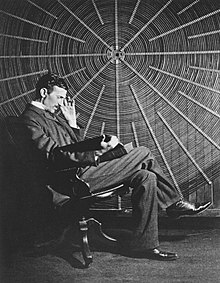
- As quoted in "A Visit to Nikola Tesla" by Dragislav L. Petković in Politika (April 1927); also in Tesla, Master of Lightning (1999) by Margaret Cheney, Robert Uth, and Jim Glenn, p. 82
- On patent controversies regarding the invention of Radio and other things, as quoted in "A Visit to Nikola Tesla" by Dragislav L. Petković in Politika (April 1927); as quoted in Tesla, Master of Lightning (1999) by Margaret Cheney, Robert Uth, and Jim Glenn, p. 73 ISBN 0760710058 ; also in Tesla: Man Out of Time (2001) by Margaret Cheney, p. 230 ISBN 0743215362
- Quoted in 'Tesla, 75, Predicts New Power Source', New York Times (5 Jul 1931), Section 2, 1.
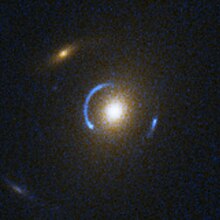
- Brooklyn Eagle (10 July 1931)
- New York Times (19 October 1931)
- Edison was by far the most successful and, probably, the last exponent of the purely empirical method of investigation. Everything he achieved was the result of persistent trials and experiments often performed at random but always attesting extraordinary vigor and resource. Starting from a few known elements, he would make their combinations and permutations, tabulate them and run through the whole list, completing test after test with incredible rapidity until he obtained a clue. His mind was dominated by one idea, to leave no stone unturned, to exhaust every possibility.
- As quoted in "Tesla Says Edison Was an Empiricist", The New York Times (19 Oct 1931), 25.
- New York Herald Tribune (11 September 1932)
- "An Inventor's Seasoned Ideas", New York Times (8 April 1934)
- "Radio Power Will Revolutionize the World" in Modern Mechanics and Inventions (July 1934)
- "When woman is boss", Colliers , January 30, 1926
- "An Inventor's Seasoned Ideas," New York Times (8 April 1934) https://teslauniverse.com/nikola-tesla/articles/tesla-sees-evidence-radio-and-light-are-sound
- Quoted in Nikola Tesla's Life & Work by István G. Kocsis, (2015).
- Tribute to King Alexander , to the editor of The New York Times (19 October 1934), also at Heroes of Serbia
- New York Times (11 July 1935), p. 23, c.8
- On being informed that Marconi was transmitting wireless messages across the Atlantic Ocean, as quoted in "Who Invented Radio?" at PBS.org , and in Tesla : The Modern Sorcerer (1999) by Daniel Blair Stewart, p. 371
- Quoted in Marconi and Tesla: Pioneers of Radio Communication (2008) by Tim O'Shei, ISBN 159845076X , p. 5
- My Inventions by Nikola Tesla, ISBN 978-1614270843 , p. 45
- See Tesla: Man Out of Time by Margaret Cheney, p. 165
The Problem of Increasing Human Energy (1900) [ edit ]

- When we speak of man, we have a conception of humanity as a whole, and before applying scientific methods to the investigation of his movement we must accept this as a physical fact. But can anyone doubt to-day that all the millions of individuals and all the innumerable types and characters constitute an entity, a unit? Though free to think and act, we are held together, like the stars in the firmament, with ties inseparable. These ties cannot be seen, but we can feel them. I cut myself in the finger, and it pains me: this finger is a part of me. I see a friend hurt, and it hurts me, too: my friend and I are one. And now I see stricken down an enemy, a lump of matter which, of all the lumps of matter in the universe, I care least for, and it still grieves me. Does this not prove that each of us is only part of a whole? For ages this idea has been proclaimed in the consummately wise teachings of religion, probably not alone as a means of insuring peace and harmony among men, but as a deeply founded truth. The Buddhist expresses it in one way, the Christian in another, but both say the same: We are all one. Metaphysical proofs are, however, not the only ones which we are able to bring forth in support of this idea. Science, too, recognizes this connectedness of separate individuals, though not quite in the same sense as it admits that the suns, planets, and moons of a constellation are one body, and there can be no doubt that it will be experimentally confirmed in times to come, when our means and methods for investigating psychical and other states and phenomena shall have been brought to great perfection. Still more: this one human being lives on and on. The individual is ephemeral, races and nations come and pass away, but man remains. Therein lies the profound difference between the individual and the whole.
- For every person who perishes from the effects of a stimulant , at least a thousand die from the consequences of drinking impure water. This precious fluid, which daily infuses new life into us, is likewise the chief vehicle through which disease and death enter our bodies . The germs of destruction it conveys are enemies all the more terrible as they perform their fatal work unperceived. They seal our doom while we live and enjoy. The majority of people are so ignorant or careless in drinking water, and the consequences of this are so disastrous , that a philanthropist can scarcely use his efforts better than by endeavoring to enlighten those who are thus injuring themselves. By systematic purification and sterilization of the drinking water the human mass would be very considerably increased. It should be made a rigid rule which might be enforced by law to boil or to sterilize otherwise the drinking water in every household and public place. The mere filtering does not afford sufficient security against infection. All ice for internal uses should be artificially prepared from water thoroughly sterilized. The importance of eliminating germs of disease from the city water is generally recognized, but little is being done to improve the existing conditions, as no satisfactory method of sterilizing great quantities of water has yet been brought forward. By improved electrical appliances we are now enabled to produce ozone cheaply and in large amounts, and this ideal disinfectant seems to offer a happy solution of the important question .
- The production of artificial food as a means for causing an increase of the human mass naturally suggests itself, but a direct attempt of this kind to provide nourishment does not appear to me rational, at least not for the present. Whether we could thrive on such food is very doubtful. We are the result of ages of continuous adaptation, and we cannot radically change without unforeseen and, in all probability, disastrous consequences. So uncertain an experiment should not be tried. By far the best way, it seems to me, to meet the ravages of the evil, would be to find ways of increasing the productivity of the soil. With this object the preservation of forests is of an importance which cannot be overestimated, and in this connection, also, the utilization of water-power for purposes of electrical transmission, dispensing in many ways with the necessity of burning wood, and tending thereby to forest preservation, is to be strongly advocated. But there are limits in the improvement to be effected in this and similar ways. To increase materially the productivity of the soil, it must be more effectively fertilized by artificial means. The question of food-production resolves itself, then, into the question how best to fertilize the soil. What it is that made the soil is still a mystery. To explain its origin is probably equivalent to explaining the origin of life itself. The rocks, disintegrated by moisture and heat and wind and weather, were in themselves not capable of maintaining life. Some unexplained condition arose, and some new principle came into effect, and the first layer capable of sustaining low organisms, like mosses was formed. These, by their life and death, added more of the life sustaining quality to the soil, and higher organisms could then subsist, and so on and on, until at last highly developed plant and animal life could flourish. But though the theories are, even now, not in agreement as to how fertilization is effected, it is a fact, only too well ascertained, that the soil cannot indefinitely sustain life, and some way must be found to supply it with the substances which have been abstracted from it by the plants. The chief and most valuable among these substances are compounds of nitrogen, and the cheap production of these is, therefore, the key for the solution of the all-important food problem. Our atmosphere contains an inexhaustible amount of nitrogen, and could we but oxidize it and produce these compounds, an incalculable benefit for mankind would follow. Long ago this idea took a powerful hold on the imagination of scientific men, but an efficient means for accomplishing this result could not be devised. The problem was rendered extremely difficult by the extraordinary inertness of the nitrogen, which refuses to combine even with oxygen. But here electricity comes to our aid: the dormant affinities of the element are awakened by an electric current of the proper quality. As a lump of coal which has been in contact with oxygen for centuries without burning will combine with it when once ignited, so nitrogen, excited by electricity, will burn. I did not succeed, however, in producing electrical discharges exciting very effectively the atmospheric nitrogen until a comparatively recent date, although I showed, in May, 1891, in a scientific lecture, a novel form of discharge or electrical flame named "St. Elmo's hotfire," which, besides being capable of generating ozone in abundance, also possessed, as I pointed out on that occasion, distinctly the quality of exciting chemical affinities. This discharge or flame was then only three or four inches long, its chemical action was likewise very feeble, and consequently the process of oxidation of nitrogen was wasteful. How to intensify this action was the question. Evidently electric currents of a peculiar kind had to be produced in order to render the process of nitrogen combustion more efficient.
- There can be no doubt that, of all the frictional resistances, the one that most retards human movement is ignorance. Not without reason said that man of wisdom, Buddha: "Ignorance is the greatest evil in the world." The friction which results from ignorance, and which is greatly increased owing to the numerous languages and nationalities, can be reduced only by the spread of knowledge and the unification of the heterogeneous elements of humanity. No effort could be better spent. But however ignorance may have retarded the onward movement of man in times past, it is certain that, nowadays, negative forces have become of greater importance. Among these there is one of far greater moment than any other. It is called organized warfare. When we consider the millions of individuals, often the ablest in mind and body, the flower of humanity, who are compelled to a life of inactivity and unproductiveness, the immense sums of money daily required for the maintenance of armies and war apparatus, representing ever so much of human energy, all the effort uselessly spent in the production of arms and implements of destruction, the loss of life and the fostering of a barbarous spirit, we are appalled at the inestimable loss to mankind which the existence of these deplorable conditions must involve. What can we do to combat best this great evil?
- It has been argued that the perfection of guns of great destructive power will stop warfare . So I myself thought for a long time, but now I believe this to be a profound mistake. Such developments will greatly modify, but not arrest it. On the contrary, I think that every new arm that is invented, every new departure that is made in this direction, merely invites new talent and skill, engages new effort, offers new incentive, and so only gives a fresh impetus to further development. Think of the discovery of gun-powder. Can we conceive of any more radical departure than was effected by this innovation? Let us imagine ourselves living in that period: would we not have thought then that warfare was at an end, when the armor of the knight became an object of ridicule, when bodily strength and skill, meaning so much before, became of comparatively little value? Yet gunpowder did not stop warfare: quite the opposite it acted as a most powerful incentive.
- As regards the security of a country against foreign invasion, it is interesting to note that it depends only on the relative, and not the absolute, number of the individuals or magnitude of the forces, and that, if every country should reduce the war-force in the same ratio, the security would remain unaltered. An international agreement with the object of reducing to a minimum the war-force which, in view of the present still imperfect education of the masses, is absolutely indispensable, would, therefore, seem to be the first rational step to take toward diminishing the force retarding human movement.
- So we find that the three possible solutions of the great problem of increasing human energy are answered by the three words: food, peace, work. Many a year I have thought and pondered, lost myself in speculations and theories, considering man as a mass moved by a force, viewing his inexplicable movement in the light of a mechanical one, and applying the simple principles of mechanics to the analysis of the same until I arrived at these solutions, only to realize that they were taught to me in my early childhood. These three words sound the key-notes of the Christian religion. Their scientific meaning and purpose now clear to me: food to increase the mass, peace to diminish the retarding force, and work to increase the force accelerating human movement. These are the only three solutions which are possible of that great problem, and all of them have one object, one end, namely, to increase human energy. When we recognize this, we cannot help wondering how profoundly wise and scientific and how immensely practical the Christian religion is, and in what a marked contrast it stands in this respect to other religions. It is unmistakably the result of practical experiment and scientific observation which have extended through the ages, while other religions seem to be the outcome of merely abstract reasoning. Work, untiring effort, useful and accumulative, with periods of rest and recuperation aiming at higher efficiency, is its chief and ever-recurring command. Thus we are inspired both by Christianity and Science to do our utmost toward increasing the performance of mankind. This most important of human problems I shall now specifically consider.
- The ultimate results of development in these three directions are: first, the burning of coal by a cold process in a battery; second, the efficient utilization of the energy of the ambient medium; and, third the transmission without wires of electrical energy to any distance. In whatever way these results may be arrived at, their practical application will necessarily involve an extensive use of iron, and this invaluable metal will undoubtedly be an essential element in the further development along these three lines. If we succeed in burning coal by a cold process and thus obtain electrical energy in an efficient and inexpensive manner, we shall require in many practical uses of this energy electric motors that is, iron. If we are successful in deriving energy from the ambient medium, we shall need, both in the obtainment and utilization of the energy, machinery again, iron. If we realize the transmission of electrical energy without wires on an industrial scale, we shall be compelled to use extensively electric generators once more, iron. Whatever we may do, iron will probably be the chief means of accomplishment in the near future, possibly more so than in the past. How long its reign will last is difficult to tell, for even now aluminium is looming up as a threatening competitor. But for the time being, next to providing new resources of energy, it is of the greatest importance to making improvements in the manufacture and utilization of iron. Great advances are possible in these latter directions, which, if brought about, would enormously increase the useful performance of mankind. Iron is by far the most important factor in modern progress. It contributes more than any other industrial product to the force accelerating human movement. So general is the use of this metal, and so intimately is it connected with all that concerns our life, that it has become as indispensable to us as the very air we breathe. Its name is synonymous with usefulness. But, however great the influence of iron may be on the present human development, it does not add to the force urging man onward nearly as much as it might. First of all, its manufacture as now carried on is connected with an appalling waste of fuel that is, waste of energy. Then, again, only a part of all the iron produced is applied for useful purposes. A good part of it goes to create frictional resistances, while still another large part is the means of developing negative forces greatly retarding human movement. Thus the negative force of war is almost wholly represented in iron.
- Aluminium, however, will not stop at downing copper. Before many years have passed it will be engaged in a fierce struggle with iron, and in the latter it will find an adversary not easy to conquer. The issue of the contest will largely depend on whether iron shall be indispensable in electric machinery. This the future alone can decide. The magnetism as exhibited in iron is an isolated phenomenon in nature. What it is that makes this metal behave so radically different from all other materials in this respect has not yet been ascertained, though many theories have been suggested. As regards magnetism, the molecules of the various bodies behave like hollow beams partly filled with a heavy fluid and balanced in the middle in the manner of a see-saw. Evidently some disturbing influence exists in nature which causes each molecule, like such a beam, to tilt either one or the other way. If the molecules are tilted one way, the body is magnetic; if they are tilted the other way, the body is non-magnetic; but both positions are stable, as they would be in the case of the hollow beam, owing to the rush of the fluid to the lower end. Now, the wonderful thing is that the molecules of all known bodies went one way, while those of iron went the other way. This metal, it would seem, has an origin entirely different from that of the rest of the globe. It is highly improbable that we shall discover some other and cheaper material which will equal or surpass iron in magnetic qualities.
- A far better way, however, to obtain power would be to avail ourselves of the sun's rays, which beat the earth incessantly and supply energy at a maximum rate of over four million horsepower per square mile. Although the average energy received per square mile in any locality during the year is only a small fraction of that amount, yet an inexhaustible source of power would be opened up by the discovery of some efficient method of utilizing the energy of the rays. The only rational way known to me at the time when I began the study of this subject was to employ some kind of heat- or thermodynamic-engine, driven by a volatile fluid evaporate in a boiler by the heat of the rays. But closer investigation of this method, and calculation, showed that, notwithstanding the apparently vast amount of energy received from the sun's rays, only a small fraction of that energy could be actually utilized in this manner. Furthermore, the energy supplied through the sun's radiations is periodical, and the same limitations as in the use of the windmill I found to exist here also. After a long study of this mode of obtaining motive power from the sun, taking into account the necessarily large bulk of the boiler, the low efficiency of the heat-engine, the additional cost of storing the energy and other drawbacks, I came to the conclusion that the "solar engine," a few instances excepted, could not be industrially exploited with success. Another way of getting motive power from the medium without consuming any material would be to utilize the heat contained in the earth, the water, or the air for driving an engine. It is a well-known fact that the interior portions of the globe are very hot, the temperature rising, as observations show, with the approach to the center at the rate of approximately 1 degree C. for every hundred feet of depth. The difficulties of sinking shafts and placing boilers at depths of, say, twelve thousand feet, corresponding to an increase in temperature of about 120 degrees C., are not insuperable, and we could certainly avail ourselves in this way of the internal heat of the globe. In fact, it would not be necessary to go to any depth at all in order to derive energy from the stored terrestrial heat. The superficial layers of the earth and the air strata close to the same are at a temperature sufficiently high to evaporate some extremely volatile substances, which we might use in our boilers instead of water. There is no doubt that a vessel might be propelled on the ocean by an engine driven by such a volatile fluid, no other energy being used but the heat abstracted from the water. But the amount of power which could be obtained in this manner would be, without further provision, very small. Electricity produced by natural causes is another source of energy which might be rendered available. Lightning discharges involve great amounts of electrical energy, which we could utilize by transforming and storing it. Some years ago I made known a method of electrical transformation which renders the first part of this task easy, but the storing of the energy of lightning discharges will be difficult to accomplish. It is well known, furthermore, that electric currents circulate constantly through the earth, and that there exists between the earth and any air stratum a difference of electrical pressure, which varies in proportion to the height.
- When I advanced this system of telegraphy, my mind was dominated by the idea of effecting communication to any distance through the earth or environing medium, the practical consummation of which I considered of transcendent importance, chiefly on account of the moral effect which it could not fail to produce universally. As the first effort to this end I proposed at that time, to employ relay-stations with tuned circuits, in the hope of making thus practicable signaling over vast distances, even with apparatus of very moderate power then at my command. I was confident, however, that with properly designed machinery signals could be transmitted to any point of the globe, no matter what the distance, without the necessity of using such intermediate stations. I gained this conviction through the discovery of a singular electrical phenomenon, which I described early in 1892, in lectures I delivered before some scientific societies abroad, and which I have called a "rotating brush." This is a bundle of light which is formed, under certain conditions, in a vacuum-bulb, and which is of a sensitiveness to magnetic and electric influences bordering, so to speak, on the supernatural. This light-bundle is rapidly rotated by the earth's magnetism as many as twenty thousand times pre second, the rotation in these parts being opposite to what it would be in the southern hemisphere, while in the region of the magnetic equator it should not rotate at all. In its most sensitive state, which is difficult to obtain, it is responsive to electric or magnetic influences to an incredible degree. The mere stiffening of the muscles of the arm and consequent slight electrical change in the body of an observer standing at some distance from it, will perceptibly affect it. When in this highly sensitive state it is capable of indicating the slightest magnetic and electric changes taking place in the earth. The observation of this wonderful phenomenon impressed me strongly that communication at any distance could be easily effected by its means, provided that apparatus could be perfected capable of producing an electric or magnetic change of state, however small, in the terrestrial globe or environing medium.
- Another of these reasons was that I was led to recognize the transmission of electrical energy to any distance through the media as by far the best solution of the great problem of harnessing the sun's energy for the uses of man. For a long time I was convinced that such a transmission on an industrial scale, could never be realized, but a discovery which I made changed my view. I observed that under certain conditions the atmosphere, which is normally a high insulator, assumes conducting properties, and so becomes capable of conveying any amount of electrical energy. But the difficulties in the way of a practical utilization of this discovery for the purpose of transmitting electrical energy without wires were seemingly insuperable. Electrical pressures of many millions of volts had to be produced and handled; generating apparatus of a novel kind, capable of withstanding the immense electrical stresses, had to be invented and perfected, and a complete safety against the dangers of the high-tension currents had to be attained in the system before its practical introduction could be even thought of. All this could not be done in a few weeks or months, or even years. The work required patience and constant application, but the improvements came, though slowly. Other valuable results were, however, arrived at in the course of this long-continued work, of which I shall endeavor to give a brief account, enumerating the chief advances as they were successively effected. The discovery of the conducting properties of the air, though unexpected, was only a natural result of experiments in a special field which I had carried on for some years before. It was, I believe, during 1889 that certain possibilities offered by extremely rapid electrical oscillations determined me to design a number of special machines adapted for their investigation. Owing to the peculiar requirements, the construction of these machines was very difficult, and consumed much time and effort; but my work on them was generously rewarded, for I reached by their means several novel and important results. One of the earliest observations I made with these new machines was that electrical oscillations of an extremely high rate act in an extraordinary manner upon the human organism. Thus, for instance, I demonstrated that powerful electrical discharges of several hundred thousand volts, which at that time were considered absolutely deadly, could be passed through the body without inconvenience or hurtful consequences. These oscillations produced other specific physiological effects, which, upon my announcement, were eagerly taken up by skilled physicians and further investigated. This new field has proved itself fruitful beyond expectation, and in the few years which have passed since, it has been developed to such an extent that it now forms a legitimate and important department of medical science. Many results, thought impossible at that time, are now readily obtainable with these oscillations, and many experiments undreamed of then can now be readily performed by their means. I still remember with pleasure how, nine years ago, I passed the discharge of a powerful induction-coil through my body to demonstrate before a scientific society the comparative harmlessness of very rapidly vibrating electric currents, and I can still recall the astonishment of my audience. I would now undertake, with much less apprehension that I had in that experiment, to transmit through my body with such currents the entire electrical energy of the dynamos now working at Niagara forty or fifty thousand horse-power. I have produced electrical oscillations which were of such intensity that when circulating through my arms and chest they have melted wires which joined my hands, and still I felt no inconvenience. I have energized with such oscillations a loop of heavy copper wire so powerfully that masses of metal, and even objects of an electrical resistance specifically greater than that of human tissue brought close to or placed within the loop, were heated to a high temperature and melted, often with the violence of an explosion, and yet into this very space in which this terribly-destructive turmoil was going on I have repeatedly thrust my head without feeling anything or experiencing injurious after-effects. Another observation was that by means of such oscillations light could be produced in a novel and more economical manner, which promised to lead to an ideal system of electric illumination by vacuum-tubes, dispensing with the necessity of renewal of lamps or incandescent filaments, and possibly also with the use of wires in the interior of buildings. The efficiency of this light increases in proportion to the rate of the oscillations, and its commercial success is, therefore, dependent on the economical production of electrical vibrations of transcending rates. In this direction I have met with gratifying success of late, and the practical introduction of this new system of illumination is not far off. The investigations led to many other valuable observations and results, one of the more important of which was the demonstration of the practicability of supplying electrical energy through one wire without return. At first I was able to transmit in this novel manner only very small amounts of electrical energy, but in this line also my efforts have been rewarded with similar success.
- The photograph shown in Fig. 3 illustrates, as its title explains, an actual transmission of this kind effected with apparatus used in other experiments here described. To what a degree the appliances have been perfected since my first demonstrations early in 1891 before a scientific society, when my apparatus was barely capable of lighting one lamp (which result was considered wonderful), will appear when I state that I have now no difficulty in lighting in this manner four or five hundred lamps, and could light many more. In fact, there is no limit to the amount of energy which may in this way be supplied to operate any kind of electrical device.
- After demonstrating the practicability of this method of transmission, the thought naturally occurred to me to use the earth as a conductor, thus dispensing with all wires. Whatever electricity may be, it is a fact that it behaves like an incompressible fluid, and the earth may be looked upon as an immense reservoir of electricity, which, I thought, could be disturbed effectively by a properly designed electrical machine. Accordingly, my next efforts were directed toward perfecting a special apparatus which would be highly effective in creating a disturbance of electricity in the earth.
- However extraordinary the results shown may appear, they are but trifling compared with those which are attainable by apparatus designed on these same principles. I have produced electrical discharges the actual path of which, from end to end, was probably more than one hundred feet long; but it would not be difficult to reach lengths one hundred times as great. I have produced electrical movements occurring at the rate of approximately one hundred thousand horse-power, but rates of one, five, or ten million horse-power are easily practicable. In these experiments effects were developed incomparably greater than any ever produced by human agencies, and yet these results are but an embryo of what is to be.
- That communication without wires to any point of the globe is practicable with such apparatus would need no demonstration, but through a discovery which I made I obtained absolute certitude. Popularly explained, it is exactly this: When we raise the voice and hear an echo in reply, we know that the sound of the voice must have reached a distant wall, or boundary, and must have been reflected from the same. Exactly as the sound, so an electrical wave is reflected, and the same evidence which is afforded by an echo is offered by an electrical phenomenon known as a "stationary" wave that is, a wave with fixed nodal and ventral regions. Instead of sending sound-vibrations toward a distant wall, I have sent electrical vibrations toward the remote boundaries of the earth, and instead of the wall the earth has replied. In place of an echo I have obtained a stationary electrical wave, a wave reflected from afar. Stationary waves in the earth mean something more than mere telegraphy without wires to any distance. They will enable us to attain many important specific results impossible otherwise. For instance, by their use we may produce at will, from a sending-station, an electrical effect in any particular region of the globe; we may determine the relative position or course of a moving object, such as a vessel at sea, the distance traversed by the same, or its speed; or we may send over the earth a wave of electricity traveling at any rate we desire, from the pace of a turtle up to lightning speed. With these developments we have every reason to anticipate that in a time not very distant most telegraphic messages across the oceans will be transmitted without cables. For short distances we need a "wireless" telephone, which requires no expert operators. The greater the spaces to be bridged, the more rational becomes communication without wires. The cable is not only an easily damaged and costly instrument, but it limits us in the speed of transmission by reason of a certain electrical property inseparable from its construction. A properly designed plant for effecting communication without wires ought to have many times the working capacity of a cable, while it will involve incomparably less expense. Not a long time will pass, I believe, before communication by cable will become obsolete, for not only will signaling by this new method be quicker and cheaper, but also much safer. By using some new means for isolating the messages which I have contrived, an almost perfect privacy can be secured. I have observed the above effects so far only up to a limited distance of about six hundred miles, but inasmuch as there is virtually no limit to the power of the vibrations producible with such an oscillator, I feel quite confident of the success of such a plant for effecting transoceanic communication. Nor is this all. My measurements and calculations have shown that it is perfectly practicable to produce on our globe, by the use of these principles, an electrical movement of such magnitude that, without the slightest doubt, its effect will be perceptible on some of our nearer planets, as Venus and Mars. Thus from mere possibility interplanetary communication has entered the stage of probability. In fact, that we can produce a distinct effect on one of these planets in this novel manner, namely, by disturbing the electrical condition of the earth, is beyond any doubt. This way of effecting such communication is, however, essentially different from all others which have so far been proposed by scientific men. In all the previous instances only a minute fraction of the total energy reaching the planet�as much as it would be possible to concentrate in a reflector could be utilized by the supposed observer in his instrument. But by the means I have developed he would be enabled to concentrate the larger portion of the entire energy transmitted to the planet in his instrument, and the chances of affecting the latter are thereby increased many millionfold. Besides machinery for producing vibrations of the required power, we must have delicate means capable of revealing the effects of feeble influences exerted upon the earth. For such purposes, too, I have perfected new methods. By their use we shall likewise be able, among other things, to detect at considerable distance the presence of an iceberg or other object at sea. By their use, also, I have discovered some terrestrial phenomena still unexplained. That we can send a message to a planet is certain, that we can get an answer is probable: man is not the only being in the Infinite gifted with a mind.
- While I have not, as yet, actually effected a transmission of a considerable amount of energy, such as would be of industrial importance, to a great distance by this new method, I have operated several model plants under exactly the same conditions which will exist in a large plant of this kind, and the practicability of the system is thoroughly demonstrated. The experiments have shown conclusively that, with two terminals maintained at an elevation of not more than thirty thousand to thirty-five thousand feet above sea-level, and with an electrical pressure of fifteen to twenty million volts, the energy of thousands of horse-power can be transmitted over distances which may be hundreds and, if necessary, thousands of miles. I am hopeful, however, that I may be able to reduce very considerably the elevation of the terminals now required, and with this object I am following up an idea which promises such a realization. There is, of course, a popular prejudice against using an electrical pressure of millions of volts, which may cause sparks to fly at distances of hundreds of feet, but, paradoxical as it may seem, the system, as I have described it in a technical publication, offers greater personal safety than most of the ordinary distribution circuits now used in the cities. This is, in a measure, borne out by the fact that, although I have carried on such experiments for a number of years, no injury has been sustained either by me or any of my assistants.
- It is probable that we shall soon have a self-acting heat-engine capable of deriving moderate amounts of energy from the ambient medium. There is also a possibility�though a small one�that we may obtain electrical energy direct from the sun. This might be the case if the Maxwellian theory is true, according to which electrical vibrations of all rates should emanate from the sun. I am still investigating this subject. Sir William Crookes has shown in his beautiful invention known as the "radiometer" that rays may produce by impact a mechanical effect, and this may lead to some important revelation as to the utilization of the sun's rays in novel ways. Other sources of energy may be opened up, and new methods of deriving energy from the sun discovered, but none of these or similar achievements would equal in importance the transmission of power to any distance through the medium. I can conceive of no technical advance which would tend to unite the various elements of humanity more effectively than this one, or of one which would more add to and more economize human energy. It would be the best means of increasing the force accelerating the human mass. The mere moral influence of such a radical departure would be incalculable. On the other hand if at any point of the globe energy can be obtained in limited quantities from the ambient medium by means of a self-acting heat-engine or otherwise, the conditions will remain the same as before. Human performance will be increased, but men will remain strangers as they were.

A Means for Furthering Peace (1905) [ edit ]
- Universal Peace , assuming it to be in the fullest sense realizable, might not require eons for its accomplishment, however probable this may appear, judging from the imperceptibly slow growth of all great reformatory ideas of the past. … Our accepted estimates of the duration of natural metamorphoses, or changes in general, have been thrown in doubt of late. The very foundations of science have been shaken.
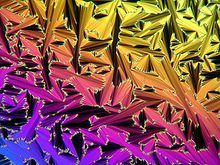
- A state of human life vaguely defined by the term "Universal Peace," while a result of cumulative effort through centuries past, might come into existence quickly , not unlike a crystal suddenly forms in a solution which has been slowly prepared. But just as no effect can precede its cause, so this state can never be brought on by any pact between nations, however solemn. Experience is made before the law is formulated, both are related like cause and effect. So long as we are clearly conscious of the expectation, that peace is to result from such a parliamentary decision, so long have we a conclusive evidence that we are not fit for peace. Only then when we shall feel that such international meetings are mere formal procedures, unnecessary except in so far as they might serve to give definite expression to a common desire, will peace be assured. To judge from current events we must be, as yet, very distant from that blissful goal. It is true that we are proceeding towards it rapidly. There are abundant signs of this progress everywhere. The race enmities and prejudices are decidedly waning.
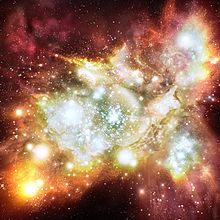
- We begin to think cosmically. Our sympathetic feelers reach out into the dim distance. The bacteria of the " Weltschmerz ," are upon us. So far, however, universal harmony has been attained only in a single sphere of international relationship. That is the postal service. Its mechanism is working satisfactorily, but — how remote are we still from that scrupulous respect of the sanctity of the mail bag! And how much farther again is the next milestone on the road to peace — an international judicial service equally reliable as the postal!
- General disarmament being for the present entirely out of question, a proportionate reduction might be recommended. The safety of any country and of the world's commerce depending not on the absolute, but relative amount of war material, this would be evidently the first reasonable step to take towards universal economy and peace. But it would be a hopeless task to establish an equitable basis of adjustment. Population, naval strength, force of army, commercial importance, water-power, or any other natural resource, actual or prospective, are equally unsatisfactory standards to consider.
- To conquer by sheer force is becoming harder and harder every day. Defensive is getting continuously the advantage of offensive, as we progress in the satanic science of destruction. The new art of controlling electrically the movements and operations of individualized automata at a distance without wires, will soon enable any country to render its coasts impregnable against all naval attacks.
- The distance at which it can strike, and the destructive power of such a quasi-intelligent machine being for all practical purposes unlimited, the gun, the armor of the battleship and the wall of the fortress, lose their import and significance. One can prophesy with a Daniel's confidence that skilled electricians will settle the battles of the near future. But this is the least. In its effect upon war and peace, electricity offers still much greater and more wonderful possibilities. To stop war by the perfection of engines of destruction alone, might consume centuries and centuries. Other means must be employed to hasten the end.
- Fights between individuals, as well as governments and nations, invariably result from misunderstandings in the broadest interpretation of this term. Misunderstandings are always caused by the inability of appreciating one another's point of view. This again is due to the ignorance of those concerned, not so much in their own , as in their mutual fields. The peril of a clash is aggravated by a more or less predominant sense of combativeness, posed by every human being. To resist this inherent fighting tendency the best way is to dispel ignorance of the doings of others by a systematic spread of general knowledge. With this object in view, it is most important to aid exchange of thought and intercourse.
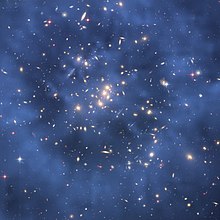
- Mutual understanding would be immensely facilitated by the use of one universal tongue. But which shall it be, is the great question. At present it looks as if the English might be adopted as such, though it must be admitted that it is not the most suitable. Each language, of course, excels in some feature.... A practical answer to that momentous question must perforce be found in times to come, for it is manifest that by adopting one common language the onward march of man would be prodigiously quickened. I do not believe that an artificial concoction, like Volapuk, will ever find universal acceptance, however time-saving it might be. That would be contrary to human nature. Languages have grown into our hearts.
- Our senses enable us to perceive only a minute portion of the outside world. Our hearing extends to a small distance. Our sight is impeded by intervening bodies and shadows. To know each other we must reach beyond the sphere of our sense perceptions. We must transmit our intelligence, travel, transport the materials and transfer the energies necessary for our existence. Following this thought we now realize, forcibly enough to dispense with argument, that of all other conquests of man, without exception, that which is most desirable, which would be most helpful in the establishment of universal peaceful relations is — the complete ANNIHILATION OF DISTANCE. To achieve this wonder, electricity is the one and only means. Inestimable good has already been done by the use of this all powerful agent, the nature of which is still a mystery. Our astonishment at what has been accomplished would be uncontrollable were it not held in check by the expectation of greater miracles to come. That one, the greatest of all, can be viewed in three aspects: Dissemination of intelligence, transportation, and transmission of power.
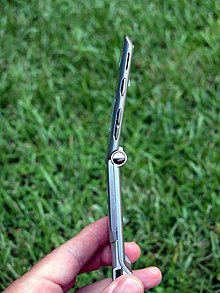
- Within a few years a simple and inexpensive device, readily carried about, will enable one to receive on land or sea the principal news, to hear a speech, a lecture, a song or play of a musical instrument, conveyed from any other region of the globe. The invention will also meet the crying need for cheap transmission to great distances, more especially over the oceans. The small working capacity of the cables and the excessive cost of messages are now fatal impediments in the dissemination of intelligence which can only be removed by transmission without wires.
- The ideal solution of the problem of transportation will be arrived at only when the complete annihilation of distance in the transmission of power in large amounts shall have become a commercial reality. That day we shall invade the domain of the bird. When the vexing problem of aerial navigation, which has defied his attempts for ages, is solved, man will advance with giant strides.
- That electrical energy can be economically transmitted without wires to any terrestrial distance, I have unmistakably established in numerous observations, experiments and measurements, qualitative and quantitative. These have demonstrated that is practicable to distribute power from a central plant in unlimited amounts, with a loss not exceeding a small fraction of one per cent , in the transmission, even to the greatest distance, twelve thousand miles — to the opposite end of the globe.
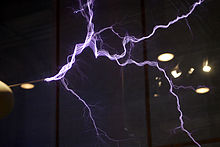
- I have obtained... spark discharges extending through more than one hundred feet and carrying currents of one thousand amperes, electromotive forces approximating twenty million volts, chemically active streamers covering areas of several thousand square feet, and electrical disturbances in the natural media surpassing those caused by lightning, in intensity. Whatever the future may bring, the universal application of these great principles is fully assured, though it may be long in coming. With the opening of the first power plant, incredulity will give way to wonderment, and this to ingratitude, as ever before.
- It should be borne in mind that electrical energy obtained by harnessing a waterfall is probably fifty times more effective than fuel energy. Since this is the most perfect way of rendering the sun's energy available, the direction of the future material development of man is clearly indicated.
- Electric current, after passing into the earth travels to the diametrically opposite region of the same and rebounding from there, returns to its point of departure with virtually undiminished force. The outgoing and returning currents clash and form nodes and loops similar to those observable on a vibrating cord. To traverse the entire distance of about twenty-five thousand miles, equal to the circumference of the globe, the current requires a certain time interval, which I have approximately ascertained. In yielding this knowledge, nature has revealed one of its most precious secrets, of inestimable consequence to man. So astounding are the facts in this connection, that it would seem as though the Creator, himself, had electrically designed this planet just for the purpose of enabling us to achieve wonders which, before my discovery, could not have been conceived by the wildest imagination.
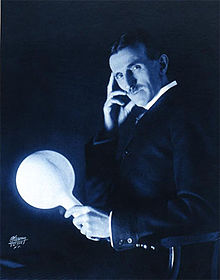
- The economic transmission of power without wires is of all-surpassing importance to man. By its means he will gain complete mastery of the air, the sea and the desert. It will enable him to dispense with the necessity of mining, pumping, transporting and burning fuel, and so do away with innumerable causes of sinful waste. By its means, he will obtain at any place and in any desired amount, the energy of remote waterfalls — to drive his machinery, to construct his canals, tunnels and highways, to manufacture the materials of his want, his clothing and food, to heat and light his home — year in, year out, ever and ever, by day and by night. It will make the living glorious sun his obedient, toiling slave. It will bring peace and harmony on earth.
- It is not a dream , it is a simple feat of scientific electrical engineering , only expensive — blind, faint-hearted, doubting world! . . . Humanity is not yet sufficiently advanced to be willingly led by the discover's keen searching sense. But who knows? Perhaps it is better in this present world of ours that a revolutionary idea or invention instead of being helped and patted, be hampered and ill-treated in its adolescence — by want of means, by selfish interest, pedantry, stupidity and ignorance; that it be attacked and stifled; that it pass through bitter trials and tribulations, through the heartless strife of commercial existence. So do we get our light. So all that was great in the past was ridiculed, condemned, combated, suppressed — only to emerge all the more powerfully, all the more triumphantly from the struggle.
Man's Greatest Achievement (1908; 1930) [ edit ]
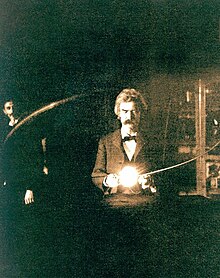
Variant 1 : An early version of this essay as quoted by Tesla in a letter (dated 19 April 1908) published in The New York Times (21 April 1908)
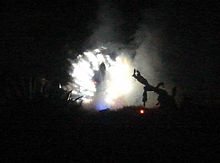
- According to an adopted theory, every ponderable atom is differentiated from a tenuous fluid, filling all space merely by spinning motion, as a whirl of water in a calm lake. By being set in movement this fluid, the ether, becomes gross matter. Its movement arrested, the primary substance reverts to its normal state. It appears, then, possible for man through harnessed energy of the medium and suitable agencies for starting and stopping ether whirls to cause matter to form and disappear. At his command, almost without effort on his part, old worlds would vanish and new ones would spring into being. He could alter the size of this planet, control its seasons, adjust its distance from the sun, guide it on its eternal journey along any path he might choose, through the depths of the universe. He could make planets collide and produce his suns and stars, his heat and light; he could originate life in all its infinite forms. To cause at will the birth and death of matter would be man's grandest deed, which would give him the mastery of physical creation, make him fulfill his ultimate destiny.
Variant 2: New York American (6 July 1930)
- When a child is born its sense-organs are brought in contact with the outer world. The waves of sound, heat, and light beat upon its feeble body, its sensitive nerve-fibres quiver, the muscles contract and relax in obedience: a gasp, a breath, and in this act a marvelous little engine, of inconceivable delicacy and complexity of construction, unlike any on earth, is hitched to the wheel-work of the Universe.
- The little engine labors and grows, performs more and more involved operations, becomes sensitive to ever subtler influences and now there manifests itself in the fully developed being — Man — a desire mysterious, inscrutable and irresistible: to imitate nature, to create, to work himself the wonders he perceives. Inspired to this task he searches, discovers and invents, designs and constructs, and covers with monuments of beauty, grandeur and awe, the star of his birth. He descends into the bowels of the globe to bring forth its hidden treasures and to unlock its immense imprisoned energies for his use. He invades the dark depths of the ocean and the azure regions of the sky. He peers in the innermost nooks and recesses of molecular structure and lays bare to his gaze worlds infinitely remote. He subdues and puts to his service the fierce, devastating spark of Prometheus , the titanic forces of the waterfall, the wind and the tide. He tames the thundering bolt of Jove and annihilates time and space. He makes the great Sun itself his obedient toiling slave. Such is his power and might that the heavens reverberate and the whole earth trembles by the mere sound of his voice.
- What has the future in store for this strange being, born of a breath, of perishable tissue, yet Immortal, with his powers fearful and Divine? What magic will be wrought by him in the end? What is to be his greatest deed, his crowning achievement? Long ago he recognized that all perceptible matter comes from a primary substance, or a tenuity beyond conception, filling all space, the Akasha or luminiferous ether, which is acted upon by the life-giving Prana or Creative Force, calling into existence, in never ending cycles, all things and phenomena. The primary substance, thrown into infinitesimal whirls of prodigious velocity, becomes gross matter; the force subsiding, the motion ceases and matter disappears, reverting to the primary substance. Can man control this grandest, most awe-inspiring of all processes in nature? Can he harness her inexhaustible energies to perform all their functions at his bidding? more still cause them to operate simply by the force of his will? If he could do this, he would have powers almost unlimited and supernatural. At his command, with but a slight effort on his part, old worlds would disappear and new ones of his planning would spring into being. He could fix, solidify and preserve the ethereal shapes of his imagining, the fleeting visions of his dreams. He could express all the creations of his mind on any scale, in forms concrete and imperishable. He could alter the size of this planet, control its seasons, guide it along any path he might choose through the depths of the Universe. He could cause planets to collide and produce his suns and stars, his heat and light. He could originate and develop life in all its infinite forms.
- To create and to annihilate material substance, cause it to aggregate in forms according to his desire, would be the supreme manifestation of the power of Man's mind, his most complete triumph over the physical world, his crowning achievement, which would place him beside his Creator, make him fulfill his Ultimate Destiny.
My Inventions (1919) [ edit ]

Chapter 1 : Early Life
- The progressive development of man is vitally dependent on invention. It is the most important product of his creative brain. Its ultimate purpose is the complete mastery of mind over the material world, the harnessing of the forces of nature to human needs. This is the difficult task of the inventor who is often misunderstood and unrewarded. But he finds ample compensation in the pleasing exercises of his powers and in the knowledge of being one of that exceptionally privileged class without whom the race would have long ago perished in the bitter struggle against pitiless elements. Speaking for myself, I have already had more than my full measure of this exquisite enjoyment; so much, that for many years my life was little short of continuous rapture.
- I am credited with being one of the hardest workers and perhaps I am, if thought is the equivalent of labour, for I have devoted to it almost all of my waking hours. But if work is interpreted to be a definite performance in a specified time according to a rigid rule, then I may be the worst of idlers. Every effort under compulsion demands a sacrifice of life-energy. I never paid such a price. On the contrary, I have thrived on my thoughts.
- Our first endeavors are purely instinctive prompting of an imagination vivid and undisciplined. As we grow older reason asserts itself and we become more and more systematic and designing. But those early impulses, though not immediately productive, are of the greatest moment and may shape our very destinies. Indeed, I feel now that had I understood and cultivated instead of suppressing them, I would have added substantial value to my bequest to the world. But not until I had attained manhood did I realize that I was an inventor.
- The moment one constructs a device to carry into practice a crude idea, he finds himself unavoidably engrossed with the details of the apparatus. As he goes on improving and reconstructing, his force of concentration diminishes and he loses sight of the great underlying principle.… I do not rush into actual work. When I get an idea, I start at once building it up in my imagination. I change the construction, make improvements and operate the device in my mind. It is absolutely immaterial to me whether I run my turbine in thought or test it in my shop. I even note if it is out of balance.
- Of all things I liked books best. My father had a large library and whenever I could manage I tried to satisfy my passion for reading. He did not permit it and would fly in a rage when he caught me in the act. He hid the candles when he found that I was reading in secret. He did not want me to spoil my eyes. But I obtained tallow, made the wicking and cast the sticks into tin forms, and every night I would bush the keyhole and the cracks and read, often till dawn.
Chapter 2 : Extraordinary Experiences

- From childhood I was compelled to concentrate attention upon myself. This caused me much suffering, but to my present view, it was a blessing in disguise for it has taught me to appreciate the inestimable value of introspection in the preservation of life, as well as a means of achievement. The pressure of occupation and the incessant stream of impressions pouring into our consciousness through all the gateways of knowledge make modern existence hazardous in many ways. Most persons are so absorbed in the contemplation of the outside world that they are wholly oblivious to what is passing on within themselves. The premature death of millions is primarily traceable to this cause. Even among those who exercise care, it is a common mistake to avoid imaginary, and ignore the real dangers. And what is true of an individual also applies, more or less, to a people as a whole.
- I feel convinced that my preservation was not altogether accidental. An inventor's endeavor is essentially life saving. Whether he harnesses forces, improves devices, or provides new comforts and conveniences, he is adding to the safety of our existence. He is also better qualified than the average individual to protect himself in peril, for he is observant and resourceful.
- One day I went alone to the river to enjoy myself as usual. When I was a short distance from the masonry, however, I was horrified to observe that the water had risen and was carrying me along swiftly.… The pressure against my chest was great and I was barely able to keep my head above the surface.… Slowly and gradually I became exhausted and unable to withstand the strain longer. Just as I was about to let go, to be dashed against the rocks below, I saw in a flash of light a familiar diagram illustrating the hydraulic principle that the pressure of a fluid in motion is proportionate to the area exposed and automatically I turned on my left side. As if by magic, the pressure was reduced.
Chapter 3 : The Rotary Magnetic Field
- In one of the sinking spells [due to Cholera] which was thought to be the last, my father rushed into the room. I still see his pallid face as he tried to cheer me in tones belying his assurance. "Perhaps," I said, "I may get well if you will let me study engineering." "You will go to the best technical institution in the world," he solemnly replied, and I knew that he meant it. A heavy weight was lifted from my mind.… I came to life like Lazarus to the utter amazement of everybody.
- He declared that it could not be done and did me the honor of delivering a lecture on the subject, at the conclusion he remarked, "Mr. Tesla may accomplish great things, but he certainly will never do this. It would be equivalent to converting a steadily pulling force, like that of gravity into a rotary effort. It is a perpetual motion scheme, an impossible idea." But instinct is something which transcends knowledge. We have, undoubtedly, certain finer fibers that enable us to perceive truths when logical deduction, or any other willful effort of the brain, is futile.
- When I understood the task, it was not with a resolve such as men often make. With me it was a sacred vow, a question of life and death. I knew that I would perish if I failed. Now I felt that the battle was won. Back in the deep recesses of the brain was the solution, but I could net yet give it outward expression.
One afternoon, which is ever present in my recollection, I was enjoying a walk with my friend in the city park and reciting poetry. At that age I knew entire books by heart, word for word. One of these was Goethe 's Faust. The sun was just setting and reminded me of a glorious passage:
[ The glow retreats, done is the day of toil; It yonder hastes, new fields of life exploring; Ah, that no wing can lift me from the soil Upon its track to follow, follow soaring! A glorious dream! though now the glories fade. Alas! the wings that lift the mind no aid Of wings to lift the body can bequeath me. (tr. Bayard Taylor )
- On the Invention of the Induction Motor
Chapter 4 : Tesla Coil and Transformer
- The last line is about having to take up a job
Chapter 5 : The Influences That Shape Our Destiny
The gift of mental power comes from God, Divine Being, and if we concentrate our minds on that truth, we become in tune with this great power. My Mother had taught me to seek all truth in the Bible.
- After Lord Rayleigh's praise of Tesla at the Royal Institution, London, 1892
- One day, as I was roaming the mountains, I sought shelter from an approaching storm. The sky became overhung with heavy clouds, but somehow the rain was delayed until, all of a sudden, there was a lightening flash and a few moments after, a deluge. This observation set me thinking. It was manifest that the two phenomena were closely related, as cause and effect, and a little reflection led me to the conclusion that the electrical energy involved in the precipitation of the water was inconsiderable, the function of the lightening being much like that of a sensitive trigger. Here was a stupendous possibility of achievement. If we could produce electric effects of the required quality, this whole planet and the conditions of existence on it could be transformed. The sun raises the water of the oceans and winds drive it to distant regions where it remains in a state of most delicate balance. If it were in our power to upset it when and wherever desired, this might life sustaining stream could be at will controlled. We could irrigate arid deserts, create lakes and rivers, and provide motive power in unlimited amounts. This would be the most efficient way of harnessing the sun to the uses of man. The consummation depended on our ability to develop electric forces of the order of those in nature.
- About the role of J. Pierpont Morgan , and the failure of Tesla's "World System" project

Chapter 6 : The Magnifying Transmitter
- It would be calamitous, indeed, if at this time when the art is in its infancy and the vast majority, not excepting even experts, have no conception of its ultimate possibilities, a measure would be rushed through the legislature making it a government monopoly. …universal evidence unmistakably shows that the best results are always obtained in healthful commercial competition.
- While I have not lost faith in its potentialities, my views have changed since. War can not be avoided until the physical cause for its recurrence is removed and this, in the last analysis, is the vast extent of the planet on which we live. Only though annihilation of distance in every respect, as the conveyance of intelligence, transport of passengers and supplies and transmission of energy will conditions be brought about some day, insuring permanency of friendly relations. What we now want most is closer contact and better understanding between individuals and communities all over the earth and the elimination of that fanatic devotion to exalted ideals of national egoism and pride, which is always prone to plunge the world into primeval barbarism and strife. No league or parliamentary act of any kind will ever prevent such a calamity. These are only new devices for putting the weak at the mercy of the strong.
- This mental activity, at first involuntary under the pressure of illness and suffering, gradually became second nature and led me finally to recognize that I was but an automaton devoid of free will in thought and action and merely responsible to the forces of the environment. Our bodies are of such complexity of structure, the motions we perform are so numerous and involved and the external impressions on our sense organs to such a degree delicate and elusive, that it is hard for the average person to grasp this fact. Yet nothing is more convincing to the trained investigator than the mechanistic theory of life which had been, in a measure, understood and propounded by Descartes three hundred years ago.
- At present, many of the ablest minds are trying to devise expedients for preventing a repetition of the awful conflict which is only theoretically ended and the duration and main issues of which I have correctly predicted in an article printed in the Sun of December 20, 1914. The proposed League is not a remedy but, on the contrary, in the opinion of a number of competent men, may bring about results just the opposite. It is particularly regrettable that a punitive policy was adopted in framing the terms of peace, because a few years hence, it will be possible for nations to fight without armies, ships or guns, by weapons far more terrible, to the destructive action and range of which there is virtually no limit. Any city, at a distance, whatsoever, from the enemy, can be destroyed by him and no power on earth can stop him from doing so.
- We crave for new sensations but soon become indifferent to them. The wonders of yesterday are today common occurrences.
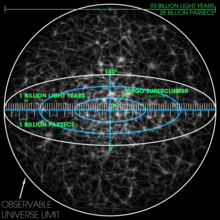
Mr. Tesla Explains Why He Will Never Marry (1924) [ edit ]
- This growing tendency of women to overshadow the masculine is a sign of a deteriorating civilization.
- Woman's determined competition with man in the business world is breaking down some of the best traditions
- Perhaps the male in human society is useless. I am frank to admit that I don't know. If women are beginning to feel this way about it--and there is striking evidence at hand that they do--then we are entering upon the cruelest period of the world's history.
- The tendency of women to push aside man, supplanting the old spirit of cooperation with him in all the affairs of life, is very disappointing to me.
A Machine to End War (1937) [ edit ]
- While I am not a believer in the orthodox sense, I commend religion, first, because every individual should have some ideal — religious , artistic , scientific , or humanitarian — to give significance to his life . Second, because all the great religions contain wise prescriptions relating to the conduct of life, which hold good now as they did when they were promulgated.
- There is no conflict between the ideal of religion and the ideal of science , but science is opposed to theological dogmas because science is founded on fact . To me, the universe is simply a great machine which never came into being and never will end. The human being is no exception to the natural order. Man, like the universe, is a machine. Nothing enters our minds or determines our actions which is not directly or indirectly a response to stimuli beating upon our sense organs from without. Owing to the similarity of our construction and the sameness of our environment, we respond in like manner to similar stimuli, and from the concordance of our reactions, understanding is born. In the course of ages, mechanisms of infinite complexity are developed, but what we call "soul " or "spirit," is nothing more than the sum of the functionings of the body. When this functioning ceases, the "soul" or the "spirit" ceases likewise.
- In past ages, the law governing the survival of the fittest roughly weeded out the less desirable strains. Then man's new sense of pity began to interfere with the ruthless workings of nature. ... The only method compatible with our notions of civilization and the race is to prevent the breeding of the unfit by sterilization and the deliberate guidance of the mating instinct. ... The trend of opinion among eugenists is that we must make marriage more difficult. Certainly no one who is not a desirable parent should be permitted to produce progeny. A century from now it will no more occur to a normal person to mate with a person eugenically unfit than to marry a habitual criminal.
Disputed [ edit ]
- First attribution is to Ralph Bergstresser who claims to have heard this from Tesla in a conversation "following an experience with the Maharaja's son" [1] .
Quotes about Tesla [ edit ]

- Comment by the midwife who assisted his birth, "at the stroke of midnight" while lightning was striking during a thunderstorm. His mother replied, " No, of light. ", as quoted in the Tesla Universe Timeline
- Dr. E. F. W. Alexanderson [ citation needed ]
- Edwin Howard Armstrong , as quoted in the The Tesla Museum exhibition in Belgrade, and by the Tesla Memorial Society of New York
- George W. Bush in a message to Stjepan Mesić , quoted in "Nikola Tesla's anniversary and ancestry" in The New Generation (24 December 2006)
- Arthur Compton [ citation needed ]
- Albert Einstein in a letter to Tesla for his 75th birthday (1931)
- Kevin R. Hutson [ citation needed ]
- Ben Johnston in the "Introduction" to My Inventions : The Autobiography of Nikola Tesla (1983).
- Reginald Kapp (1956) [ citation needed ]
- Lord Kelvin , in a statement of 1896, as quoted in Prodigal Genius : The Life of Nikola Tesla (2007) by James J. O'Neill
- Robert Millikan [ citation needed ]
- Ernest Rutherford [ citation needed ]
- David Sarnoff [ citation needed ]
- Charles F. Scott [ citation needed ]
- John Stone Stone in "John Stone Stone on Nikola Tesla's Priority in Radio and Continuous-Wave Radiofrequency Apparatus" (1915)
- Jonathan Zenneck [ citation needed ]
See also [ edit ]
- Ageless Wisdom teachings
External links [ edit ]

- Martin Thomas C., The Inventions, Researches and Writings of Nikola Tesla: With Special Reference to His Work in Polyphase Currents and High Potential Lighting , New York: The Electrical Engineer, 1894 (2nd Ed.)
- "Nikola Tesla Museum" (Belgrade, Serbia)
- "Tesla: Master of Lightning" (PBS)
- collection of scientific papers and articles by Tesla and others about Tesla's work
- Tesla Universe: Articles
- The Tesla Collection
- The Complete Tesla
- Brief biography
- My Hero project
- Tribute page
- Nikola Tesla - PESWiki
- ↑ Coments From The Inventor of the Purple Harmony Plates .
- 1856 births
- 1943 deaths
- Academics from the United States
- Physicists from the United States
- Electrical engineers
- Mechanical engineers
- Engineers from the United States
- Serbian physicists
- Immigrants to the United States
- Articles with unsourced statements
Navigation menu

IMAGES
VIDEO
COMMENTS
Nikola Tesla (11 July 1856 - 9 January 1943), was an ethnically Serbian inventor, electrical engineer, mechanical engineer and physicist. He is best known for his contributions to the design of the modern alternating current (AC) electricity supply system. [2] He was born in the village of Smiljan, in the part of former Austria-Hungary that ...
Nikola Tesla (born July 9/10, 1856, Smiljan, Austrian Empire [now in Croatia]—died January 7, 1943, New York, New York, U.S.) Serbian American inventor and engineer who discovered and patented the rotating magnetic field, the basis of most alternating-current machinery. He also developed the three-phase system of electric power transmission.
Entrepreneur and engineer Elon Musk contributed over $30 million to Tesla in 2004 and serves as the company's co-founder and CEO. Tesla Motors unveiled its first electric car, the Roadster, in ...
Nikola Tesla (/ ˈ t ɛ s l ə /; Serbian Cyrillic: Никола Тесла, [nǐkola têsla]; 10 July [O.S. 28 June] 1856 - 7 January 1943) was a Serbian-American inventor, electrical engineer, mechanical engineer, and futurist.He is known for his contributions to the design of the modern alternating current (AC) electricity supply system.. Born and raised in the Austrian Empire, Tesla ...
Nikola Tesla was born in 1856 in Smiljan, Croatia, then part of the Austro-Hungarian Empire. His father was a priest in the Serbian Orthodox church and his mother managed the family's farm. In ...
Nikola Tesla (1856-1943) was one of the greatest and most enigmatic scientists who played a key role in the development of electromagnetism and other scientific discoveries of his time. Despite his breathtaking number of patents and discoveries, his achievements were often underplayed during his lifetime. Short Biography Nikola Tesla Nikola Tesla was born 10 July […]
November 19, 2023. Nikola Tesla was one of the most forward-thinking inventors and engineers in history whose pioneering work with electricity literally lit up the modern world. Though underappreciated in his own time, Tesla created hundreds of groundbreaking innovations that fundamentally advanced technology and changed the course of history.
Nikola Tesla (July 10, 1856-January 7, 1943) was a Serbian-American inventor, electrical engineer, and futurist. As the holder of nearly 300 patents, Tesla is best known for his role in developing the modern three-phase alternating current (AC) electric power supply system and for his invention of the Tesla coil, an early advancement in the field of radio transmission.
Nikola Tesla was born in 1856 in a town called Smiljan, today part of Croatia but then located within the borders of the Austro-Hungarian Empire. His father was a priest and his mother, despite ...
Nikola Tesla , was an ethnically Serbian inventor, electrical engineer, mechanical engineer and physicist. He is best known for his contributions to the design of the modern alternating current electricity supply system. He was born in the village of Smiljan, in the part of former Austria-Hungary that is now Croatia. He later became an American citizen.
Nikola Tesla was a brilliant scientist and inventor. His work with electricity led to many advances in communication and technology.
Nikola Tesla was born on July 10, 1856 in Smiljan in the Austo-Hungarian Empire (modern-day Croatia). His father, Milutin Tesla, was a Serbian Orthodox Priest and his mother, Djuka Mandic, was an ...
The Croatian-American inventor and electrical engineer Nikola Tesla (1856-1943) invented the induction motor and the transformer known as the Tesla coil and discovered the rotating magnetic field principle. Nikola Tesla was born in Smiljan, Croatia on July 9, 1856. He attended the Polytechnic School at Graz for 4 years and spent a year at the ...
Nikola Tesla ( / ˈtɛslə /; Serbian Cyrillic: Никола Тесла, [ nǐkola têsla]; 10 July [ O.S. 28 June] 1856 - 7 January 1943) was a Serbian-American inventor, electrical engineer, mechanical engineer, and futurist. He is known for his contributions to the design of the modern alternating current (AC) electricity supply system.
On the morning of Jan. 7, 1943, he was found dead in his room by a hotel maid at age 86. Today the name Tesla is still very much in circulation. The airport in Belgrade bears his name, as does the ...
Computing and Telecommunications. Nikola Tesla was a well-known Serbian-American inventor, electrical engineer, and mechanical engineer who was awarded about 300 patents for his inventions. He was born in Smiljan, Croatia on July 10, 1856. Tesla's mother, Duka, was an early inspiration to him as she invented small household appliances during ...
Nikola Tesla Biography. Nikola Tesla was an electrical and mechanical engineer and inventor in the late 1800s to mid 1900s. He was considered Serbian-American, as he was ethnically Serbian but ...
Nikola Tesla was a mastermind inventor who shaped some ground-breaking inventions. He was an engineer who was awarded about 300 patents for his innovations in history. He also collaborated with many prominent names and companies in history. Nikola Tesla was born on 10th July in 1856 to a priest father in the Croatian town of Smiljan (Austrian ...
Nikola Tesla was born in 1856 in the town of Smiljan, which is now part of Croatia but was once part of the Austro-Hungarian Empire. His father was a priest, while his mother, despite her lack of formal education, worked with machinery and was known for her incredible memory. Keep reading the article for the entire Nikola Tesla biography.
Nikola Tesla Biography. Nikola Tesla was born on July 10, 1856 in Smiljan, Lika, which was then part of the Austo-Hungarian Empire, and today is a region of Croatia. He comes from an Orthodox family, where his father, Milutin Tesla, was an Orthodox priest. His mother, Djuka Mandic, was very intelligent and supported his life in his younger days ...
February 4, 2013. By the end of his brilliant and tortured life, the Serbian physicist, engineer and inventor Nikola Tesla was penniless and living in a small New York City hotel room. He spent ...
At the age of 28, Tesla decided to go to America in pursuit of his desire to create new inventions. Upon moving to the United States, Tesla started working with the famous American inventor, Thomas Edison. While working together, a disagreement occurred between Tesla and Edison over Edison's direct current and Tesla's alternating current.
The story of Tesla will leave you feeling mournful for his sad fate, moved by his never-ending pursuit of a better future, and inspired by his enthusiasm. There's so much more to discover. Get your copy of the biography of Nikola Tesla, and decide for yourself - genius, madman, or both? Duration - 1h 8m. Author - Luke Johnston. Narrator ...
Quoted in 'Tesla, 75, Predicts New Power Source', New York Times (5 Jul 1931), Section 2, 1. The mind is sharper and keener in seclusion and uninterrupted solitude. No big laboratory is needed in which to think. Originality thrives in seclusion free of outside influences beating upon us to cripple the creative mind.